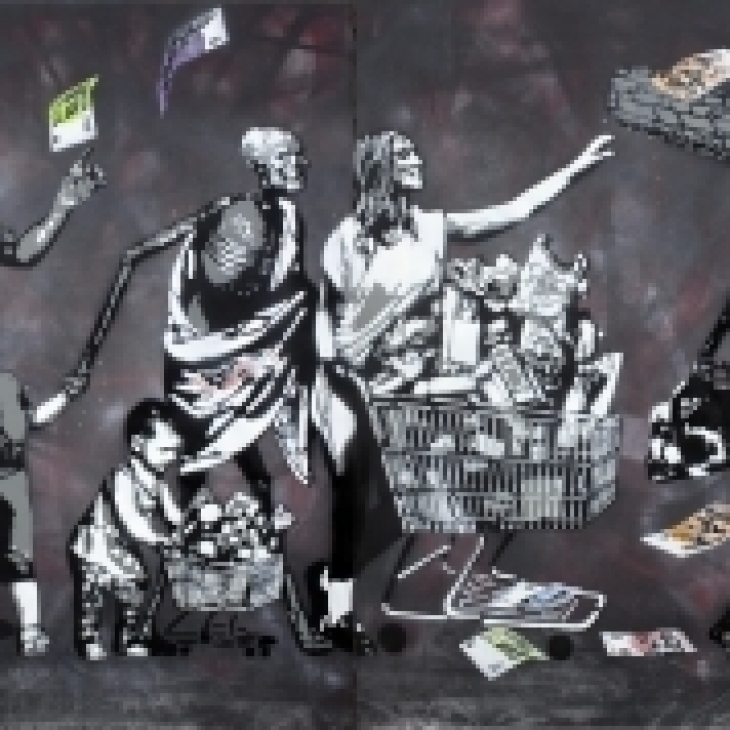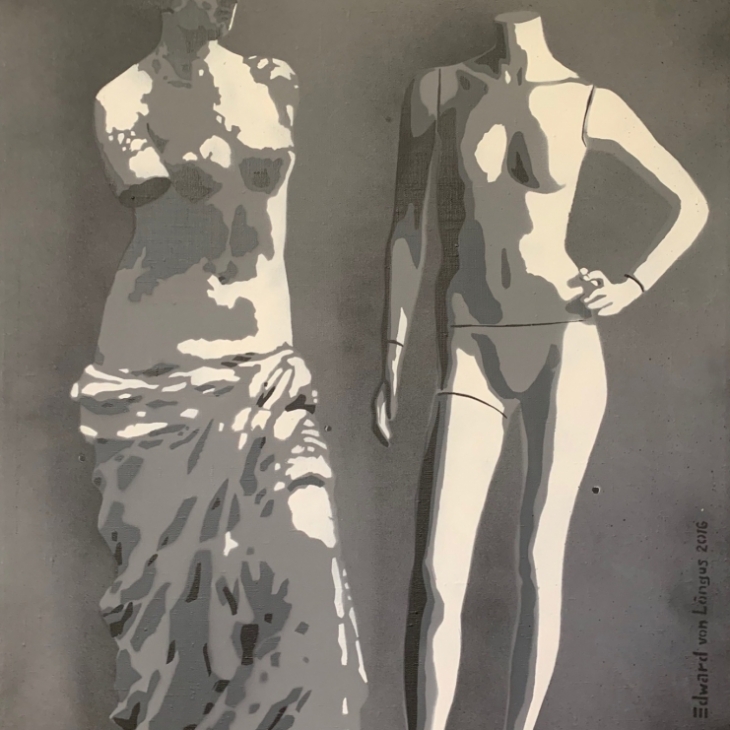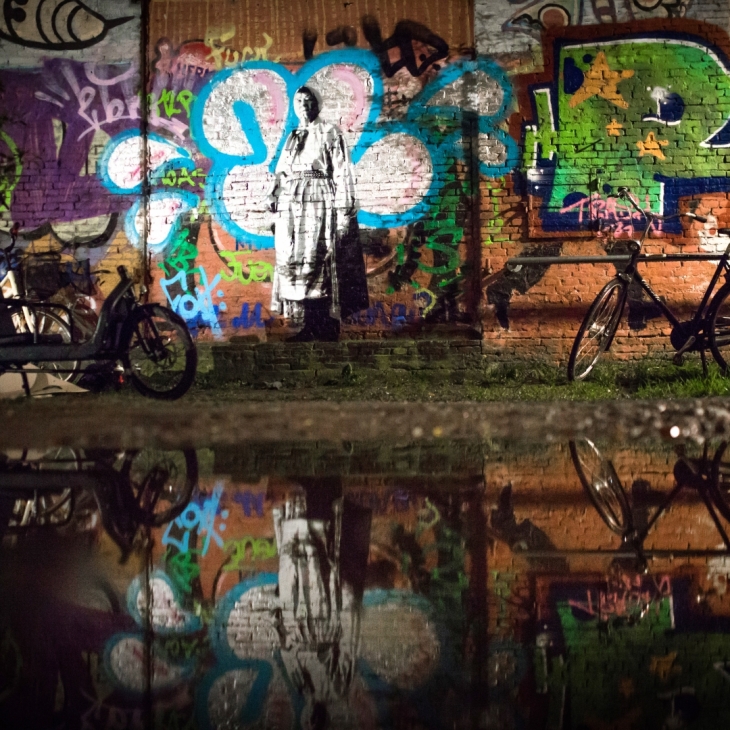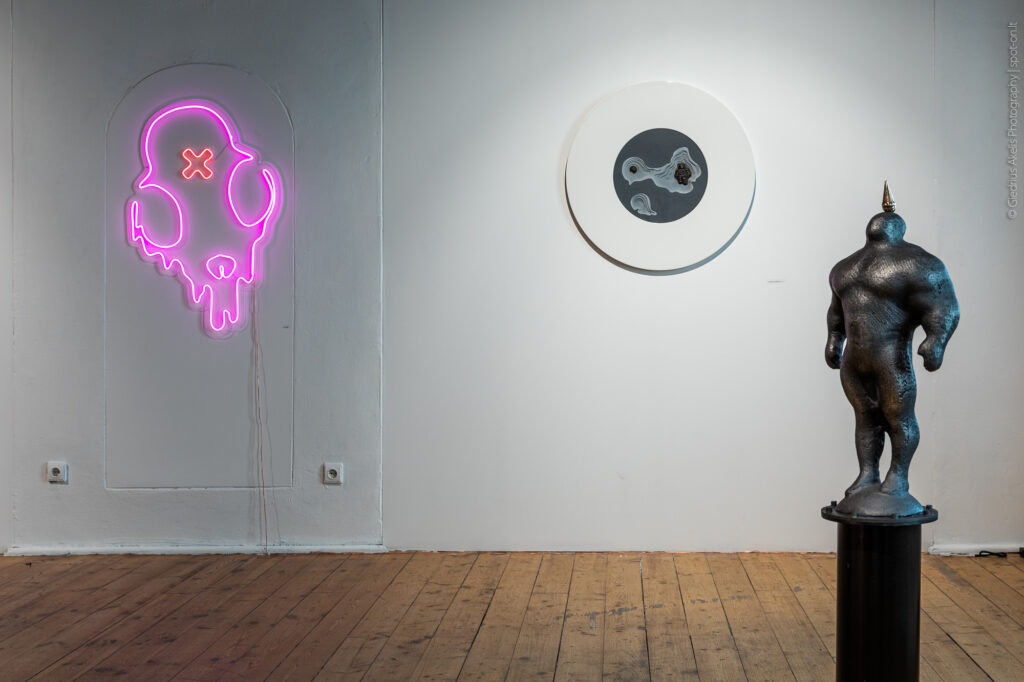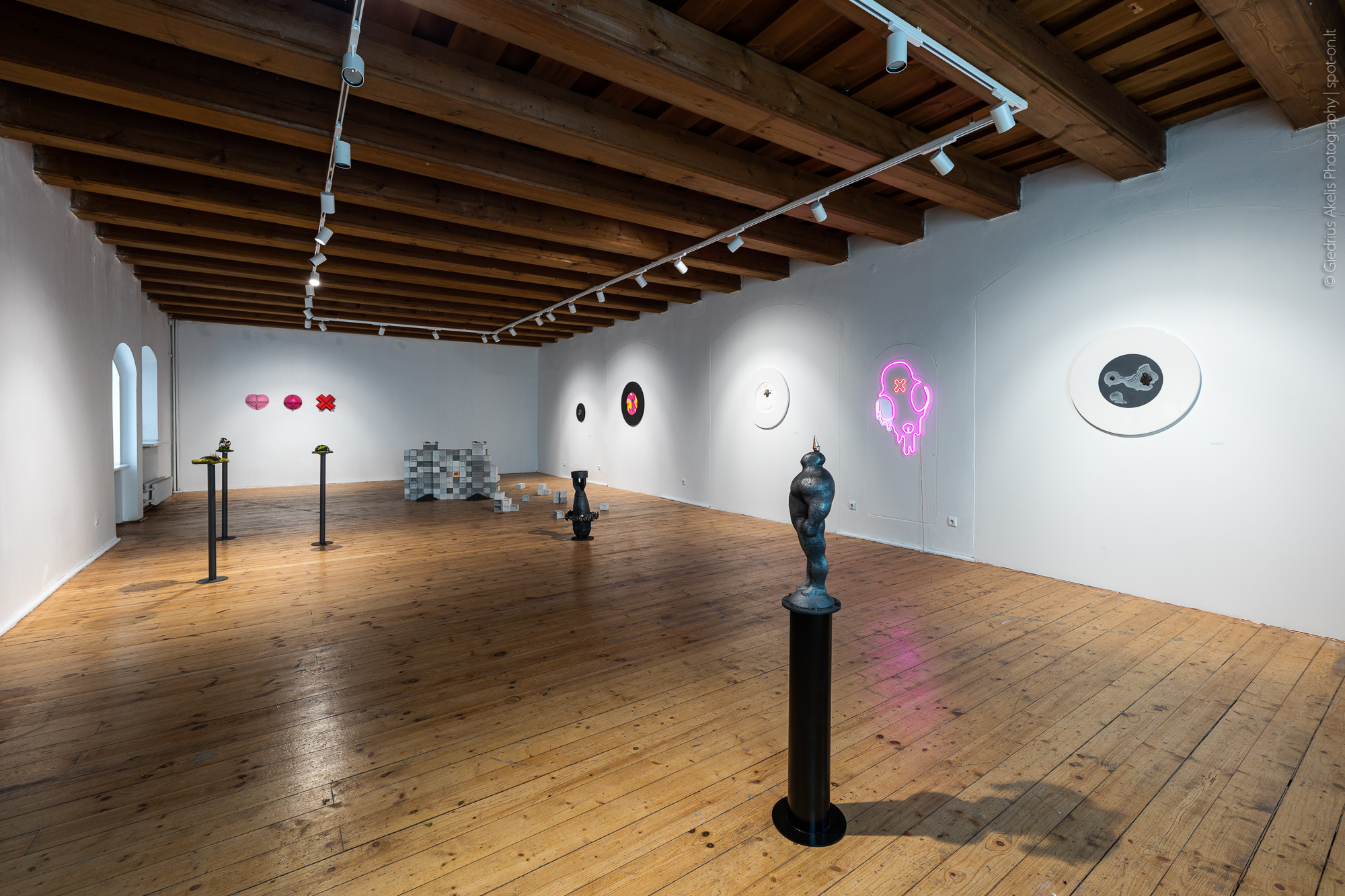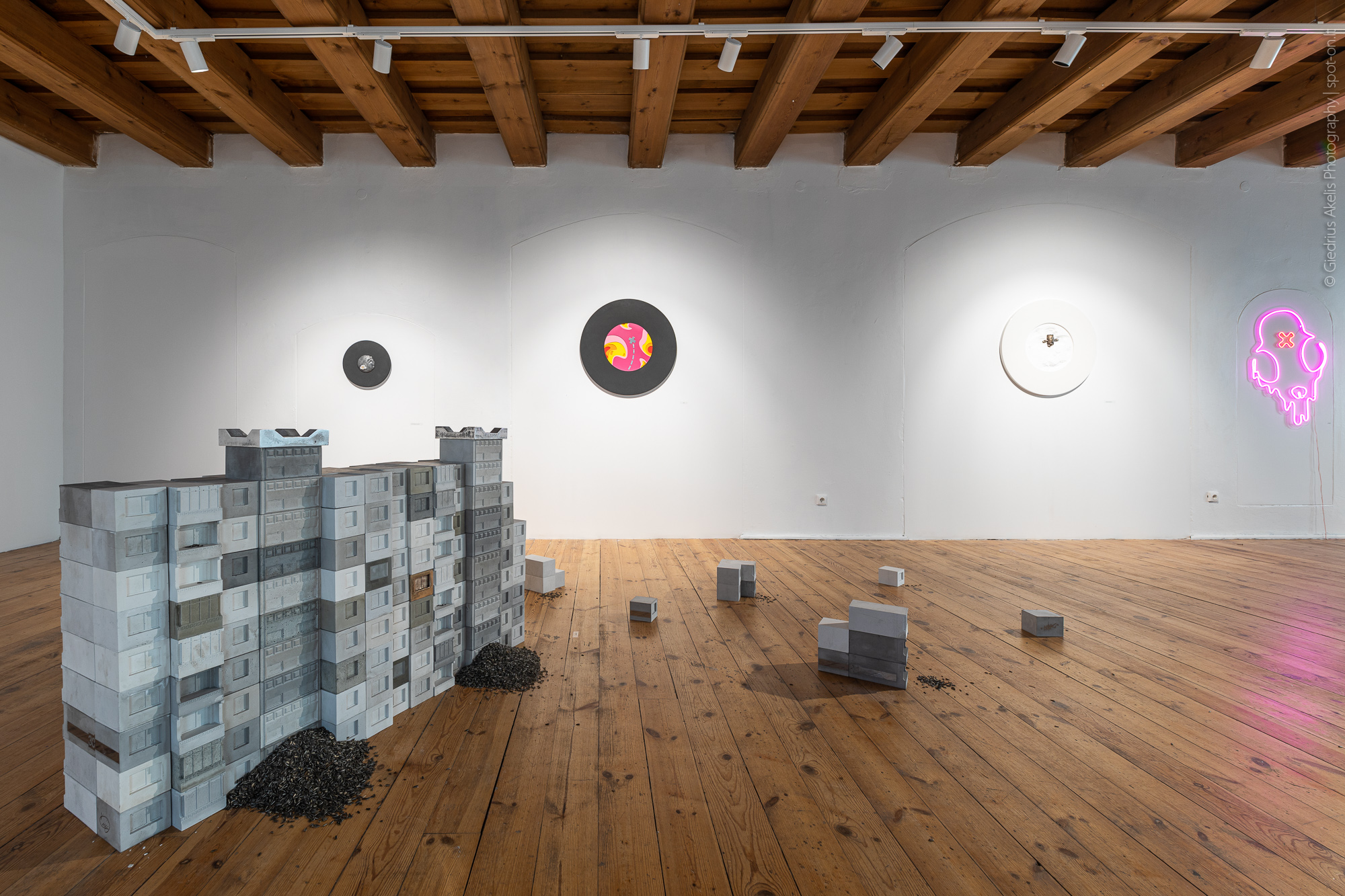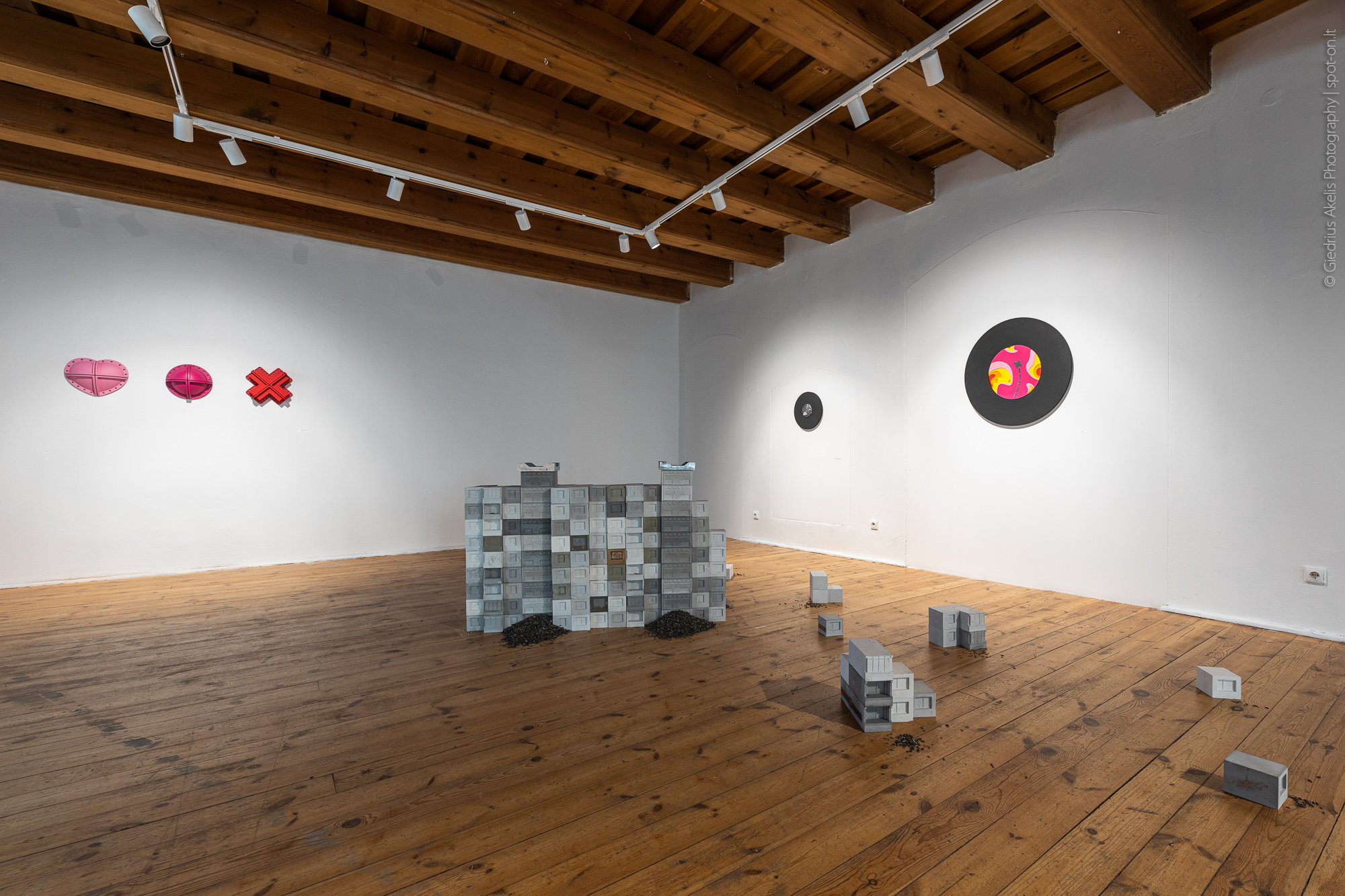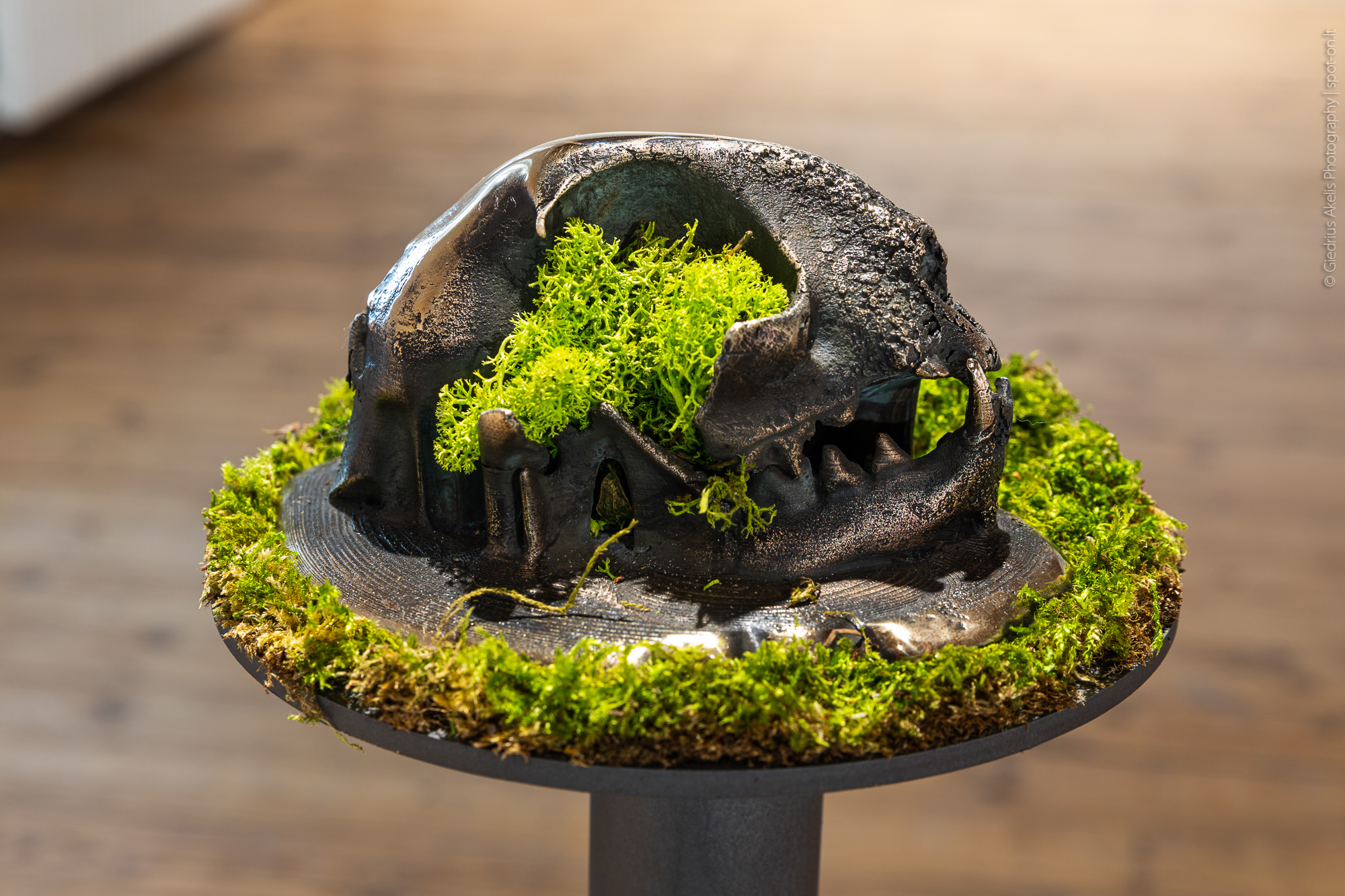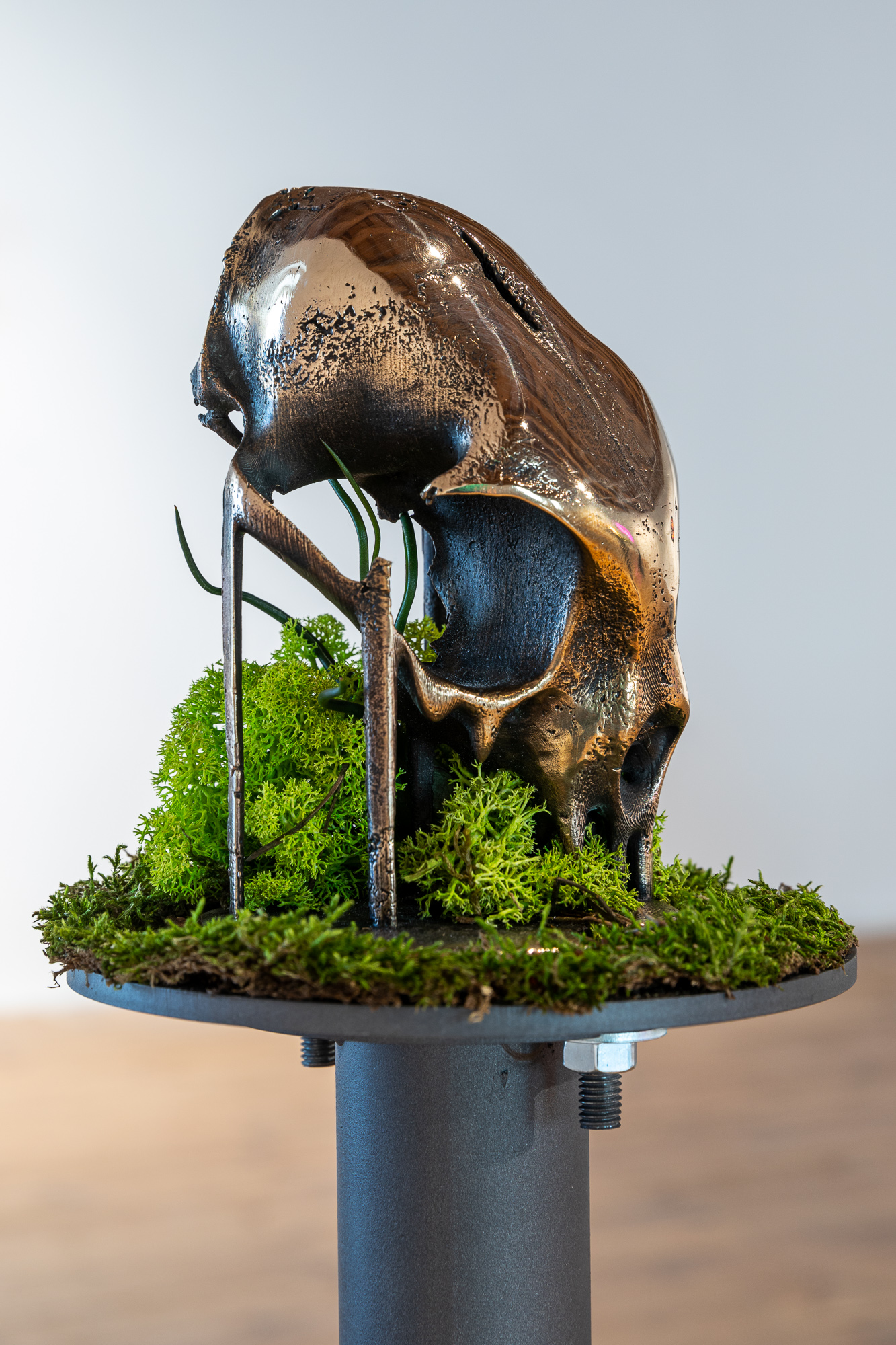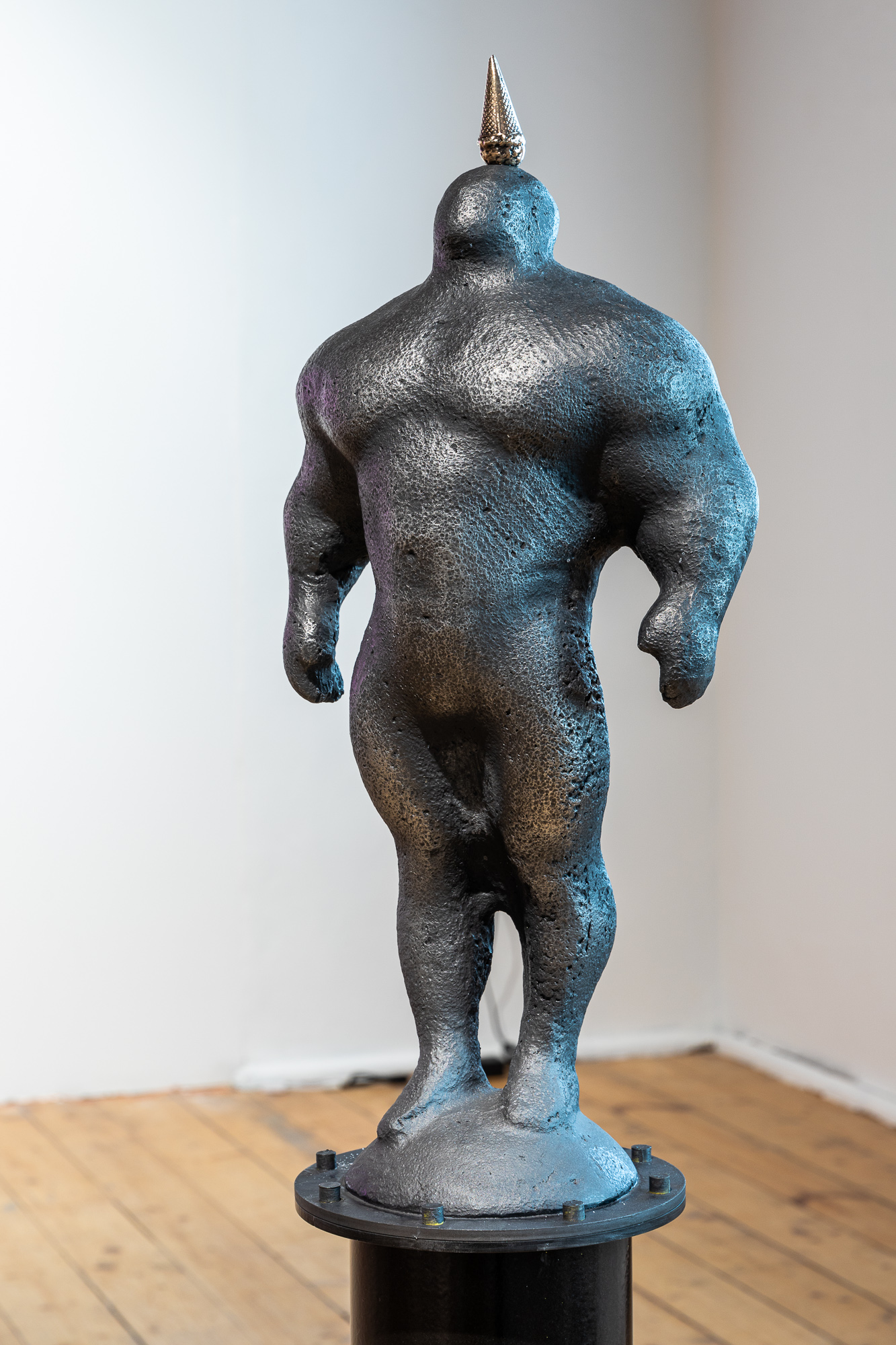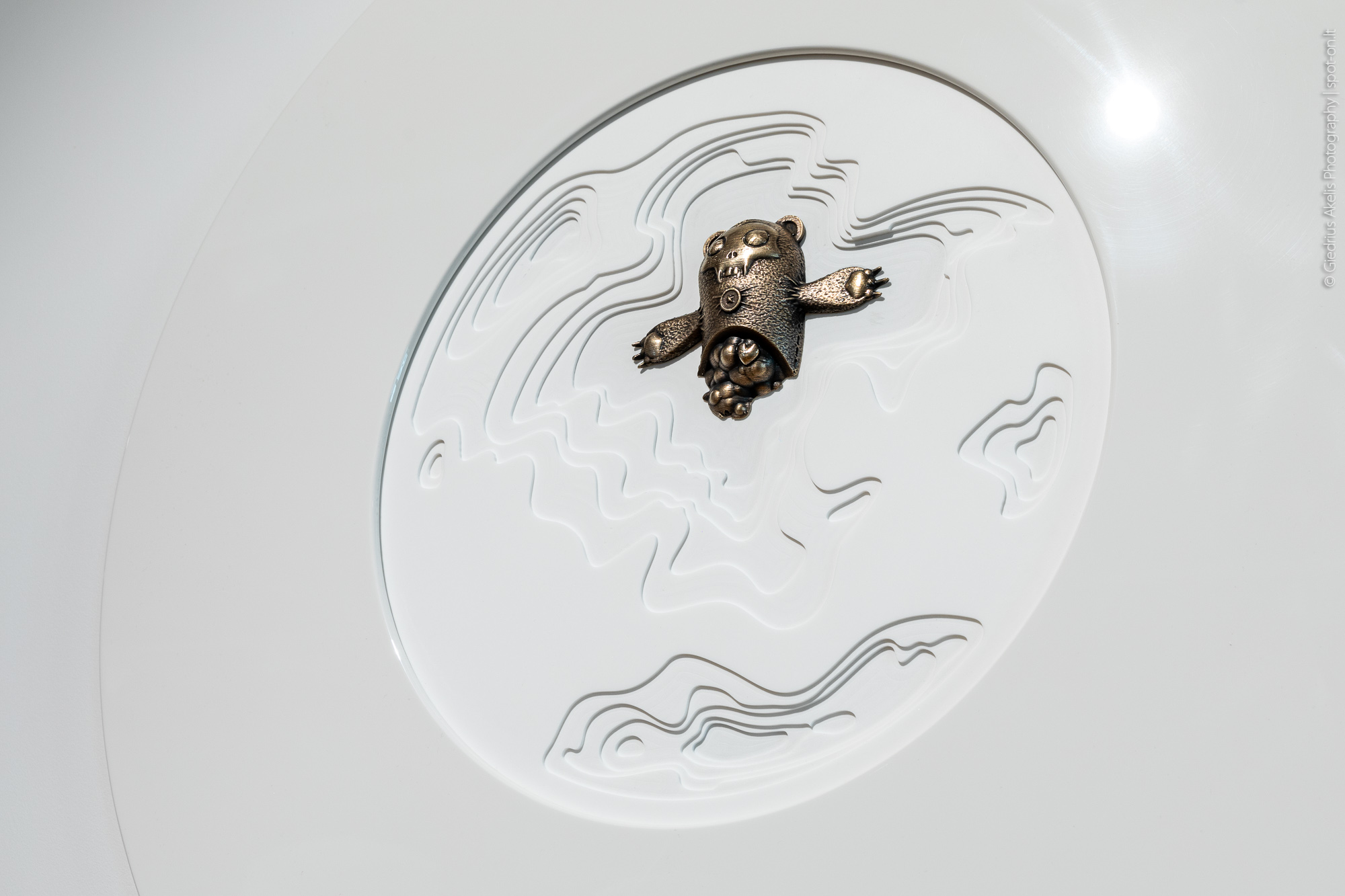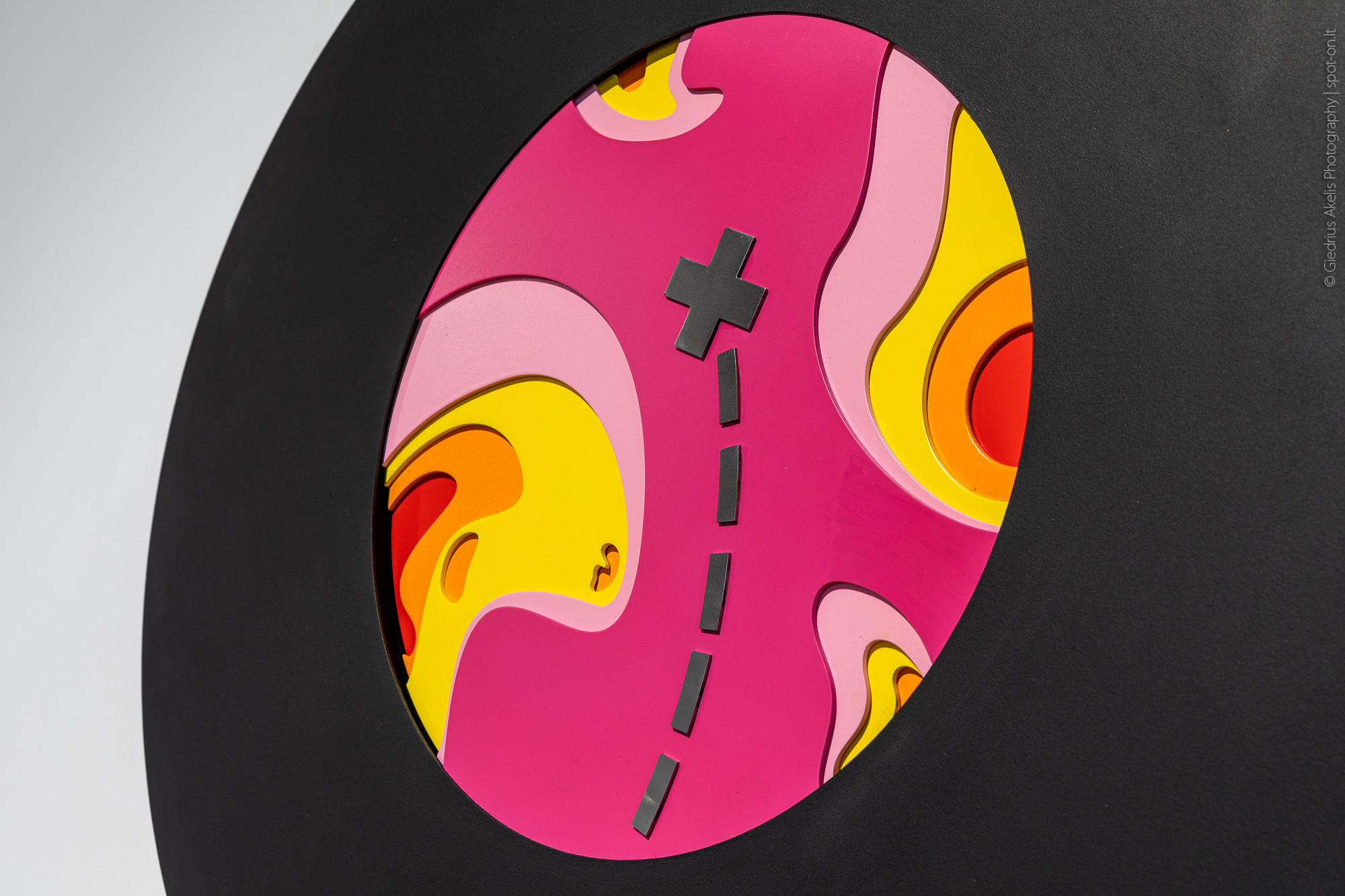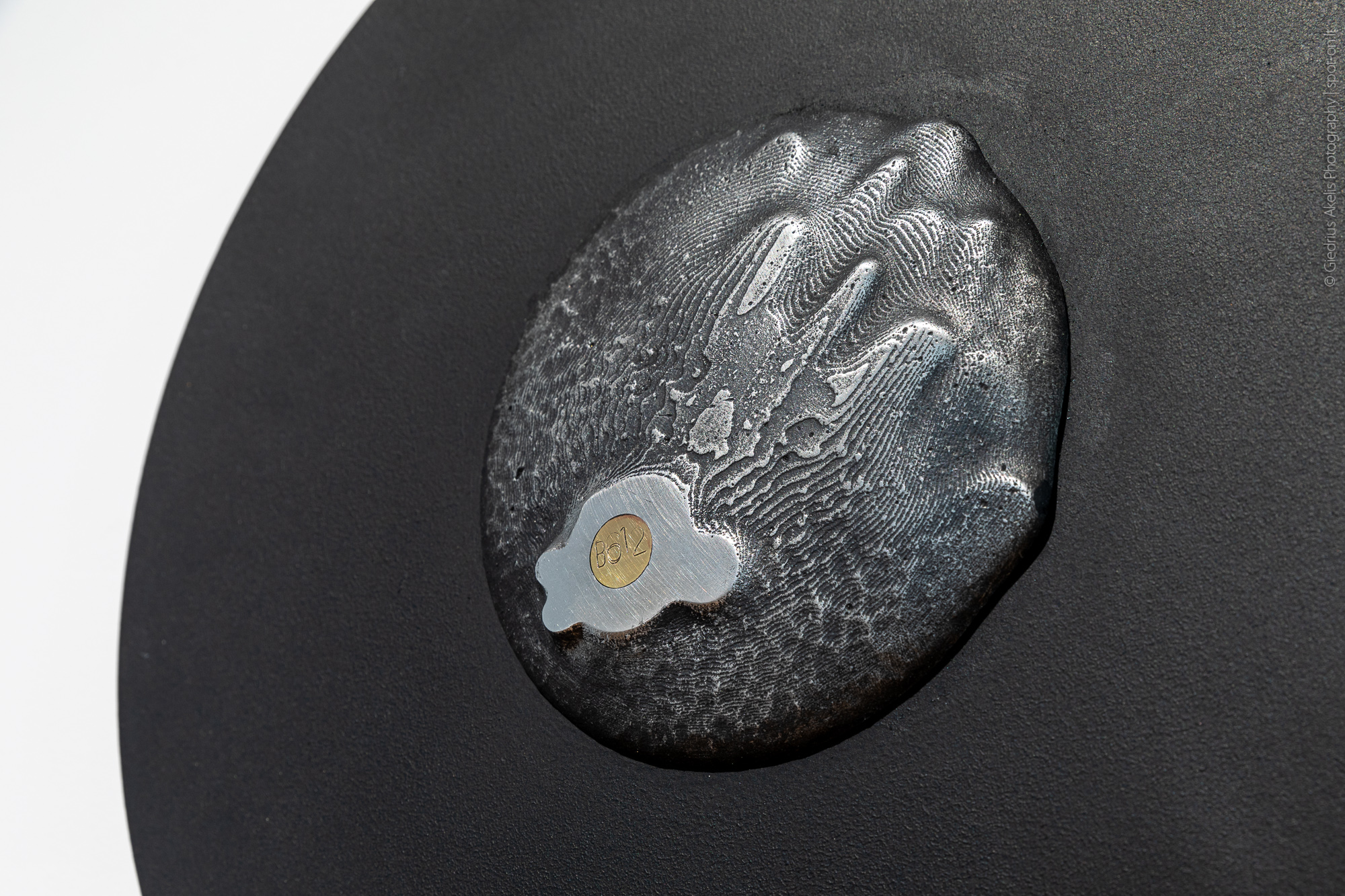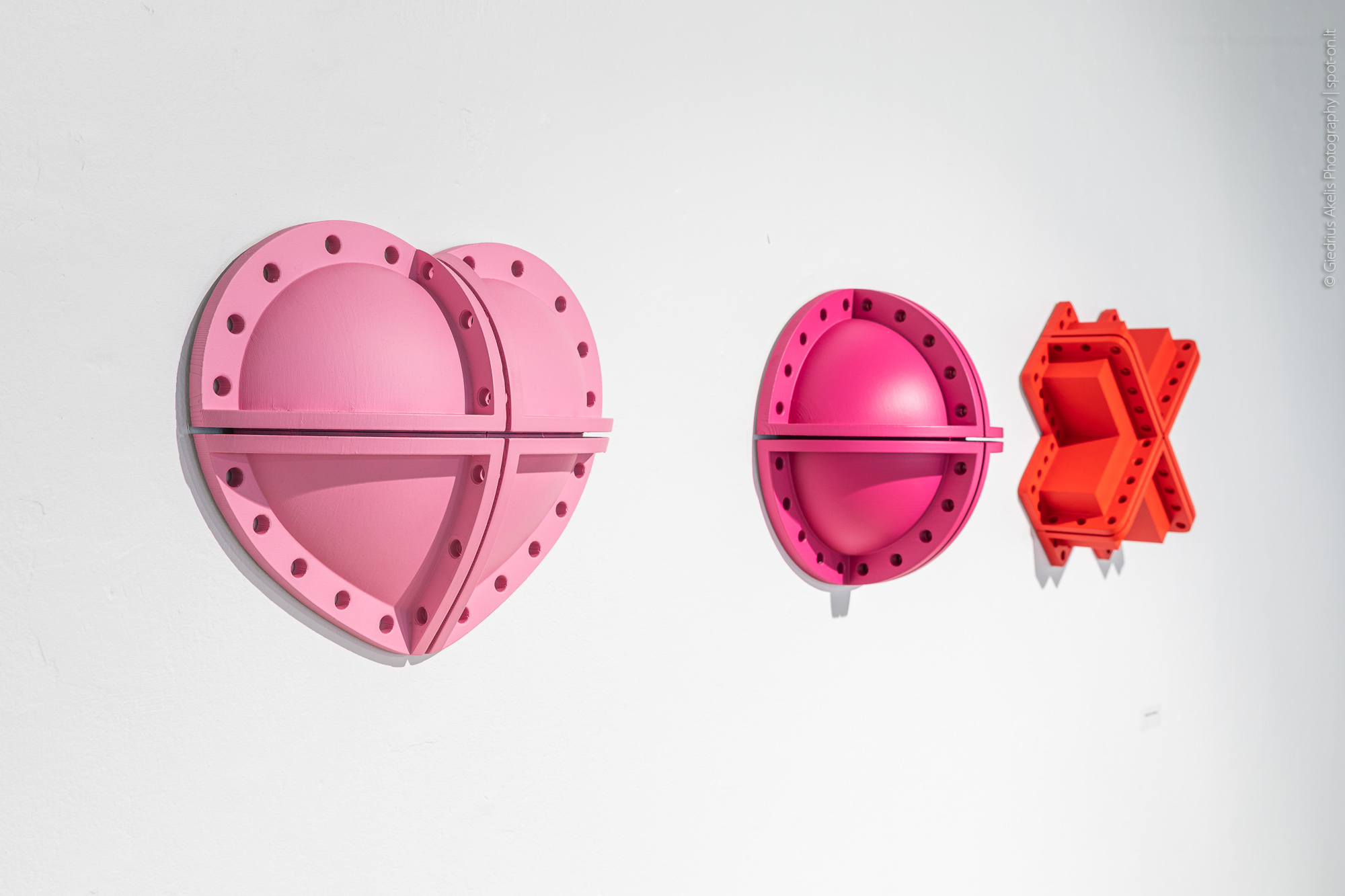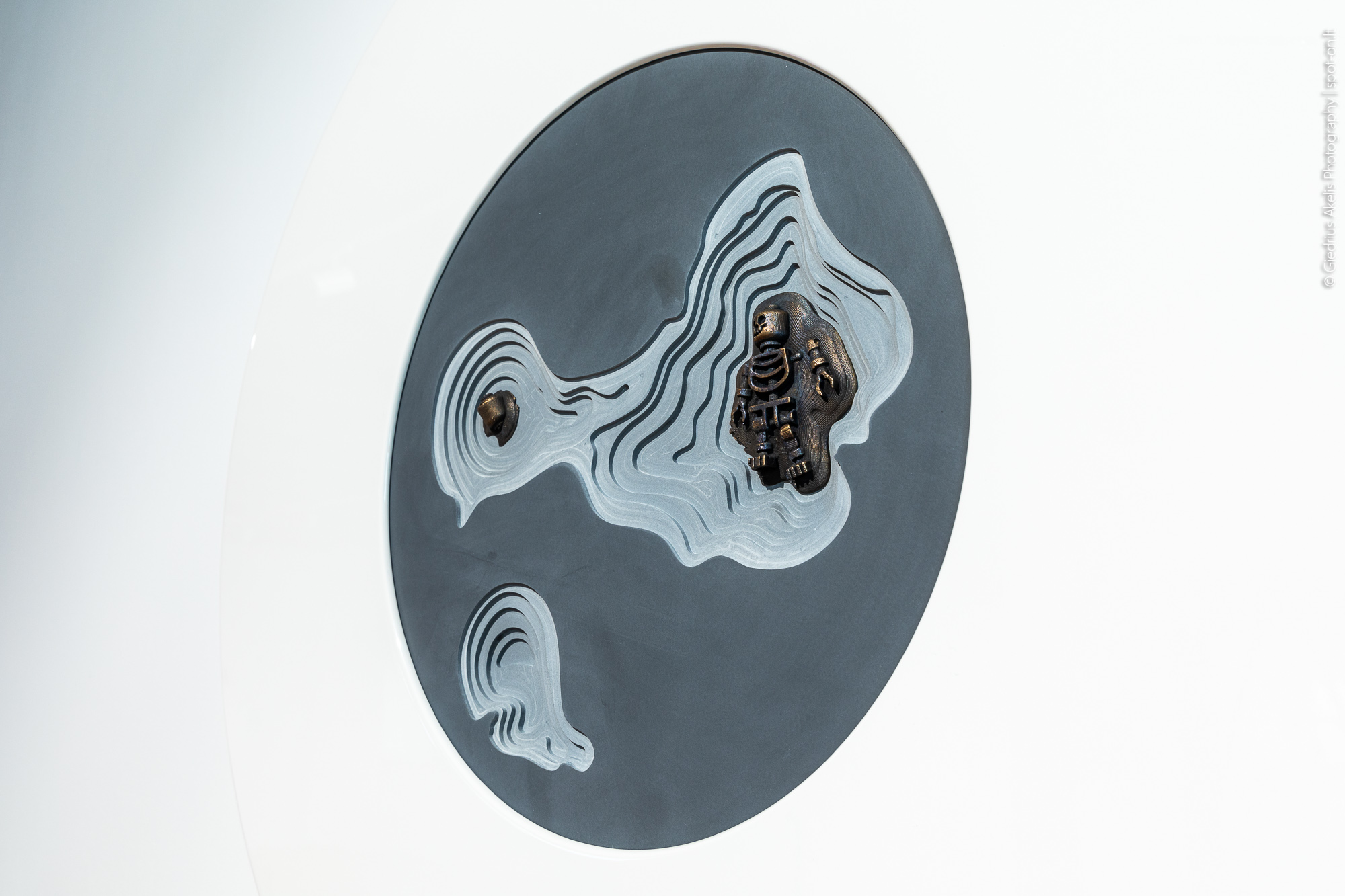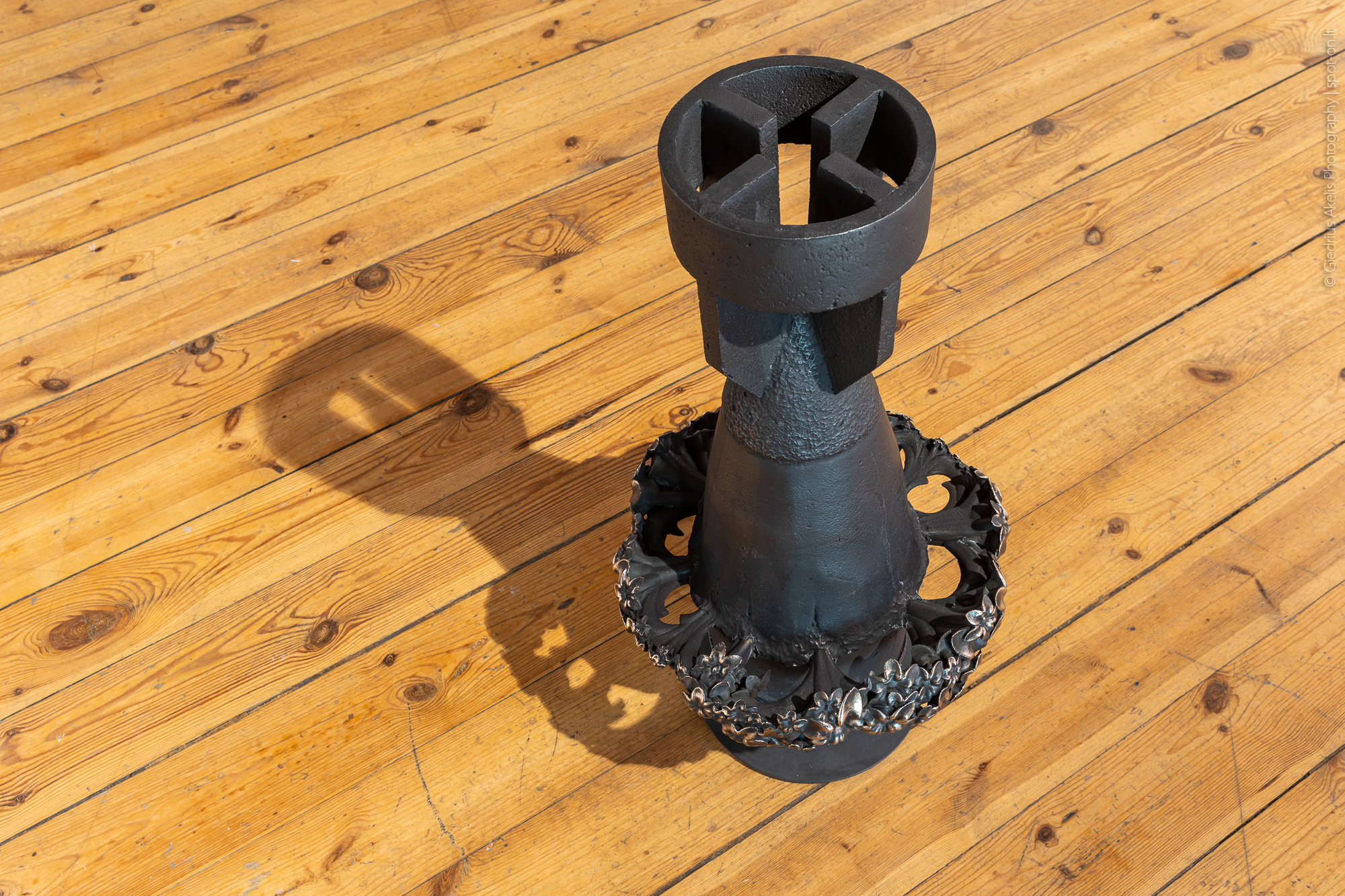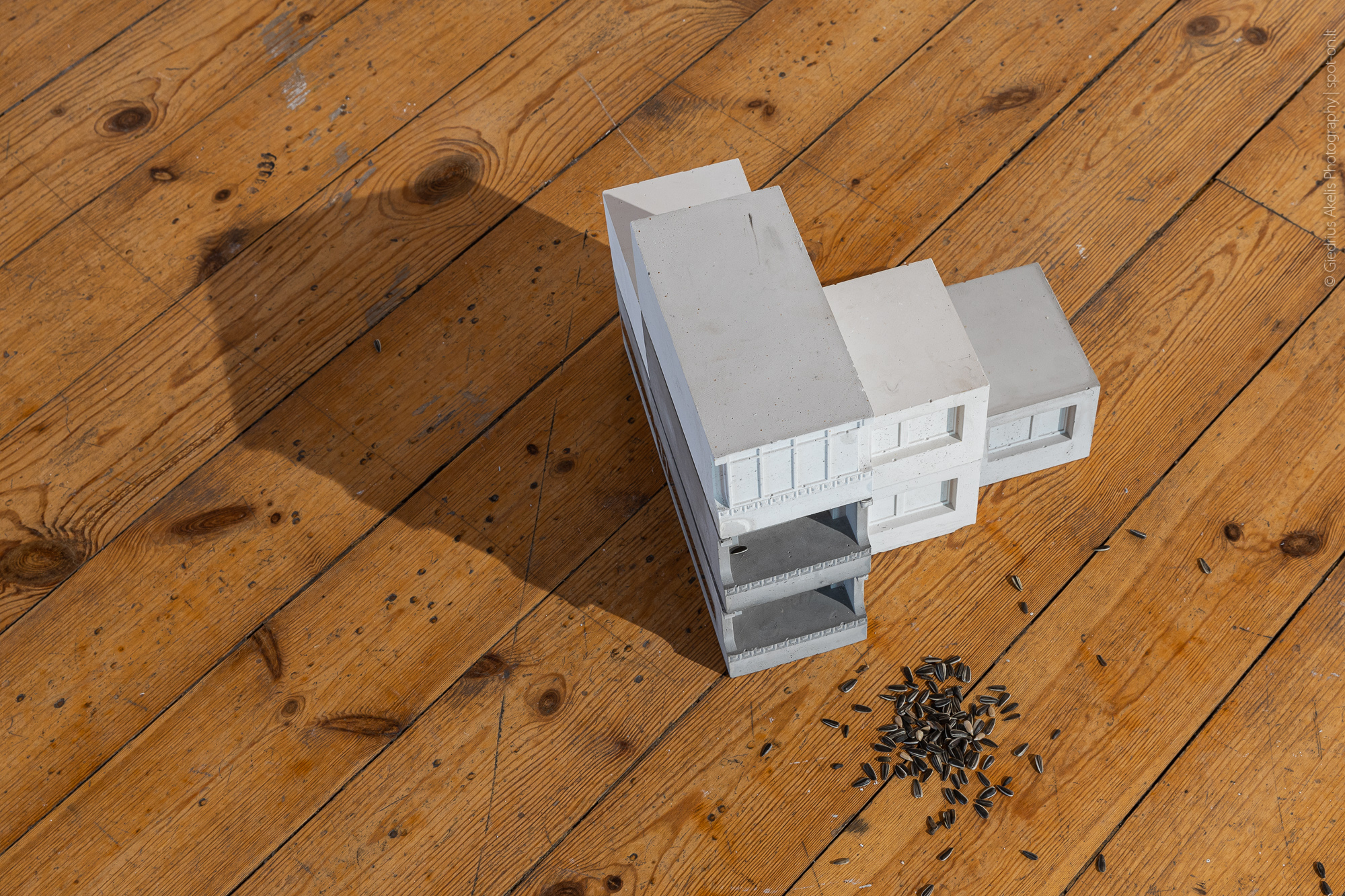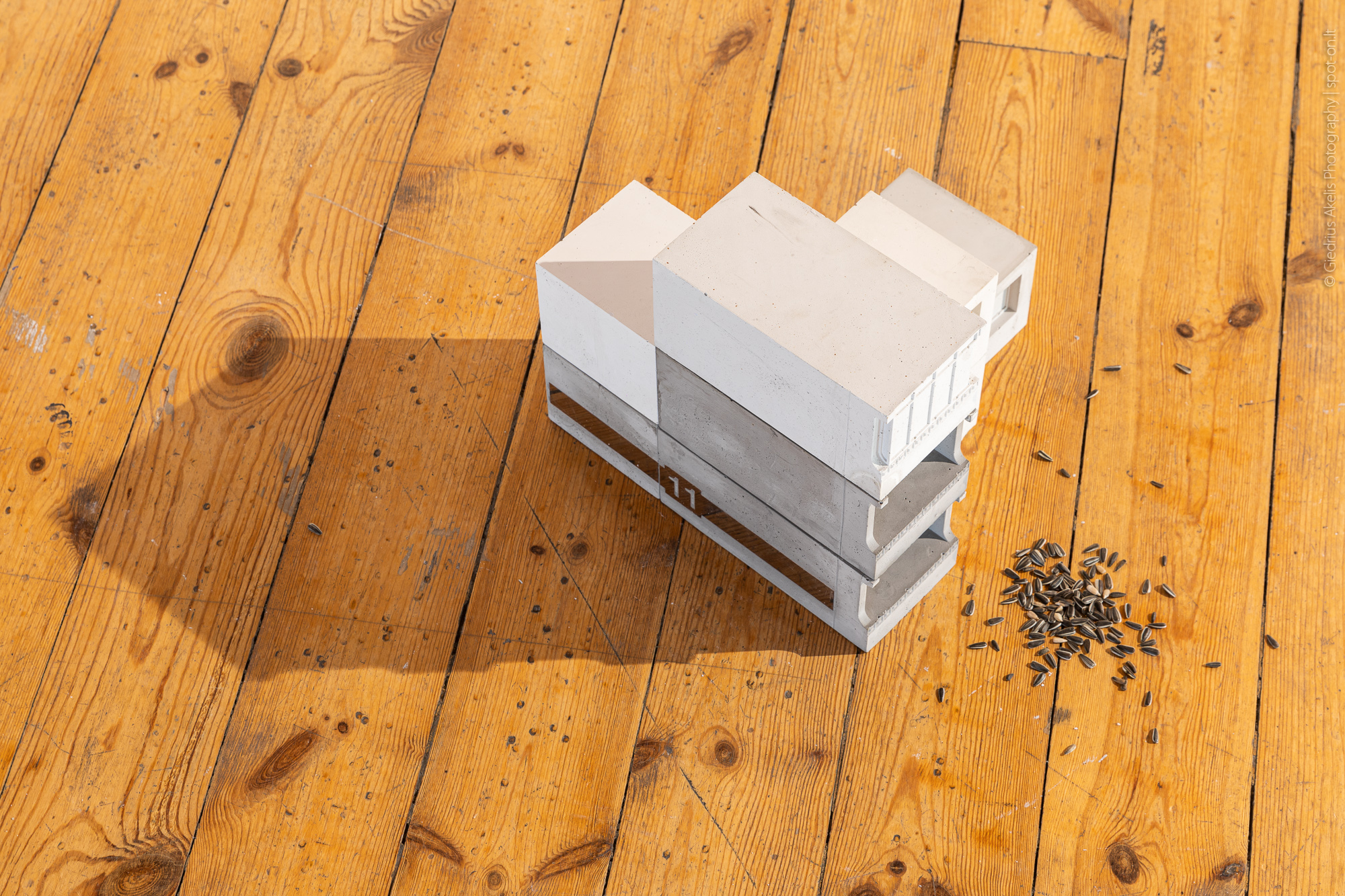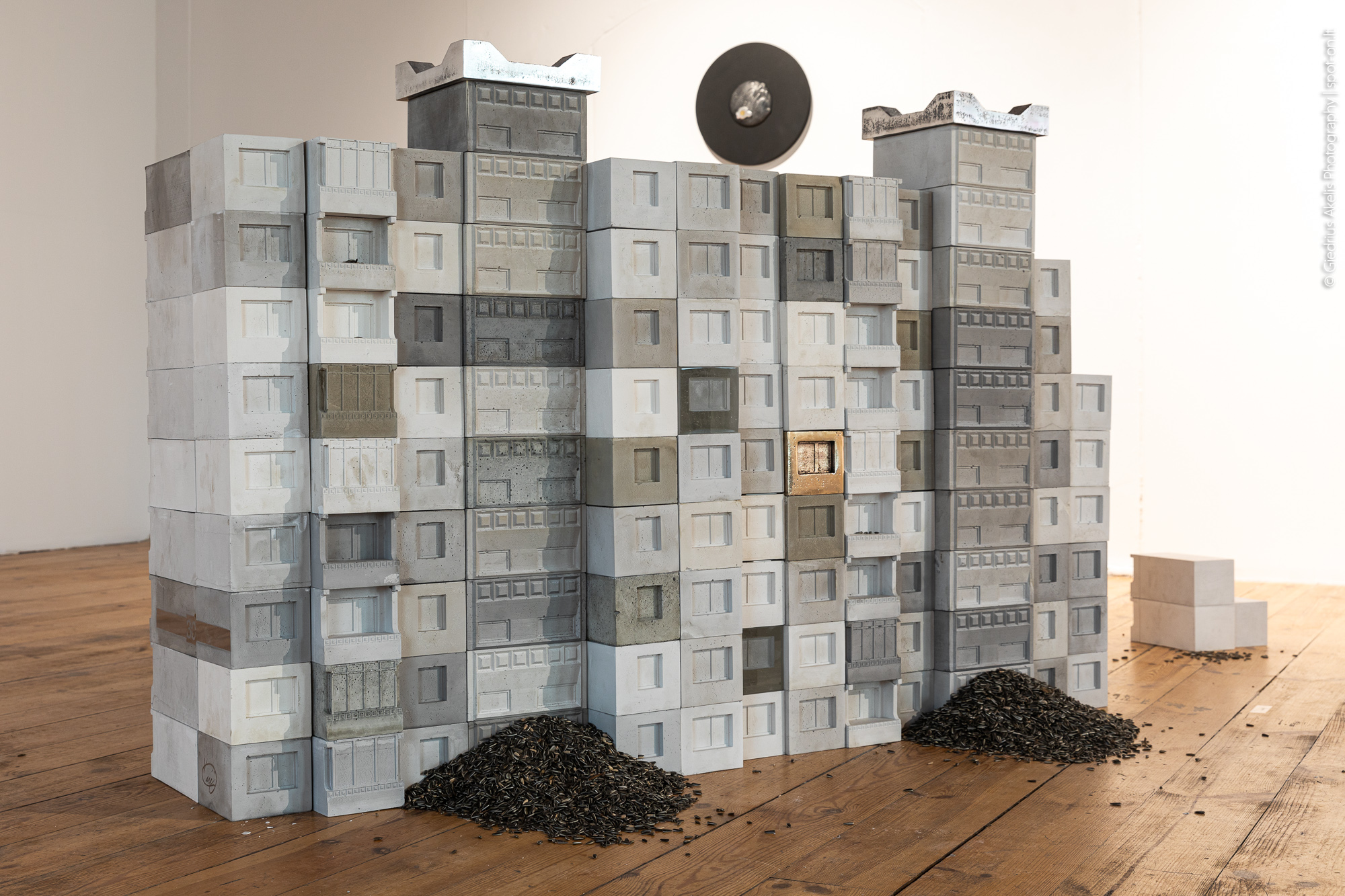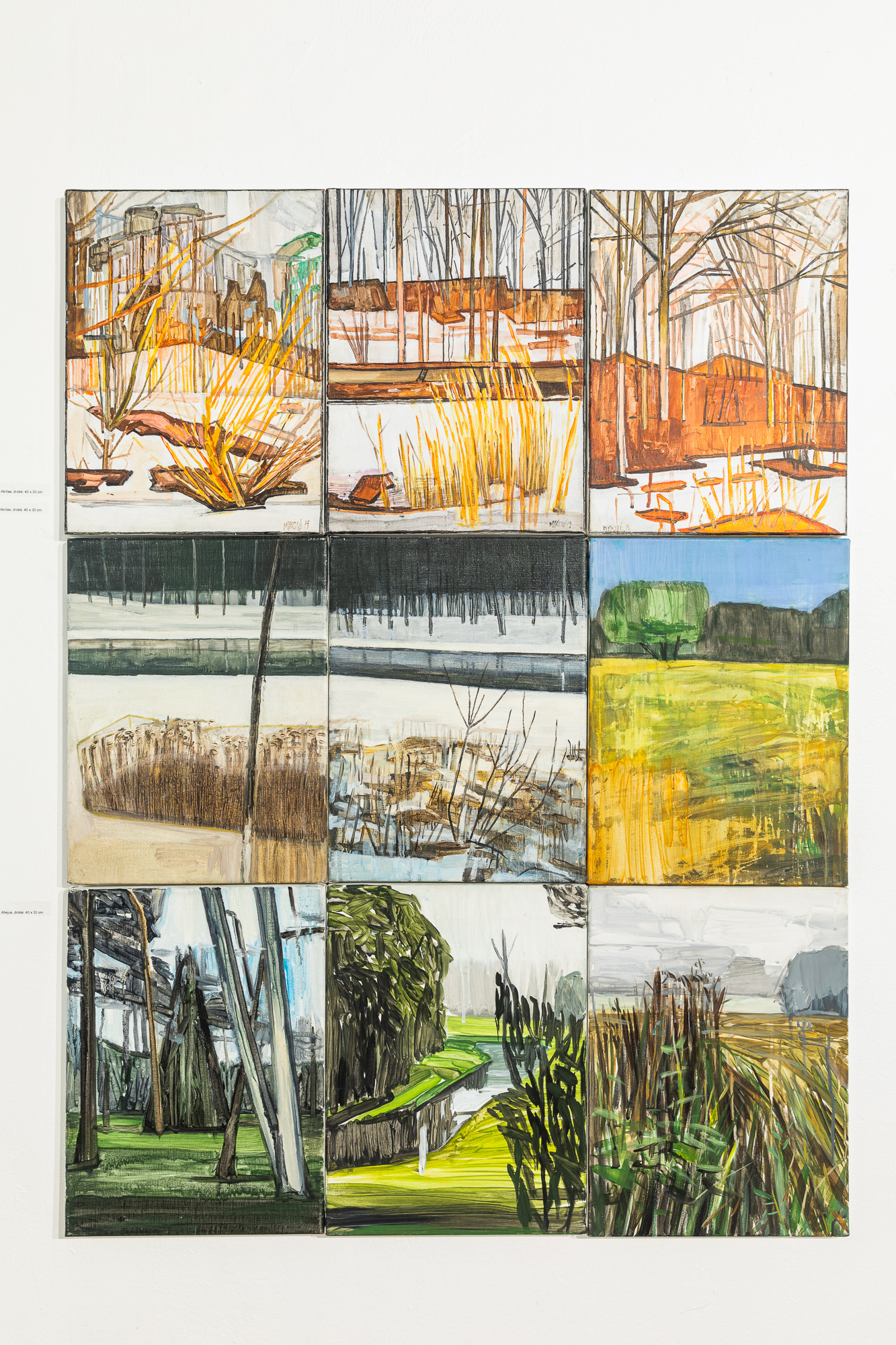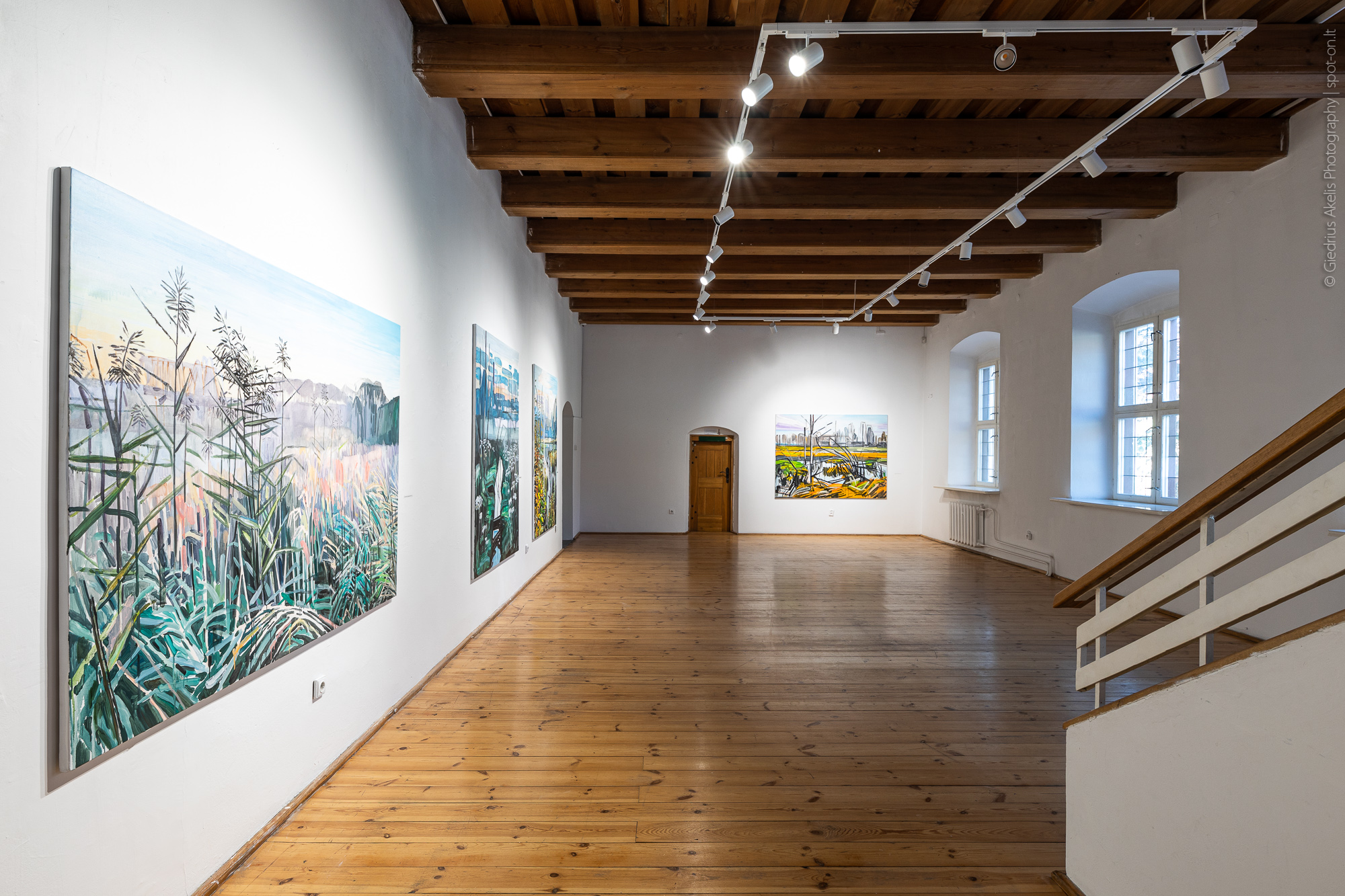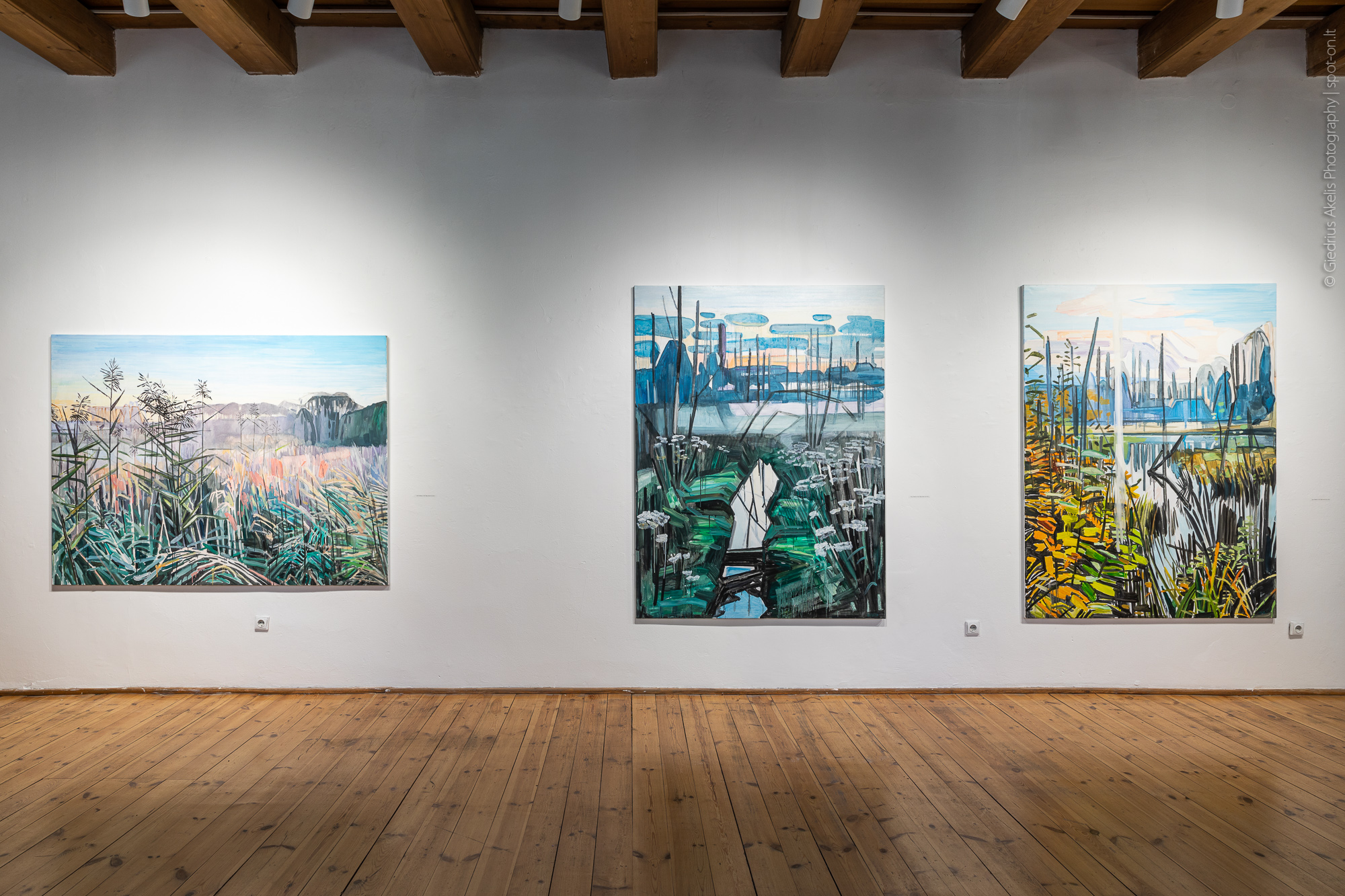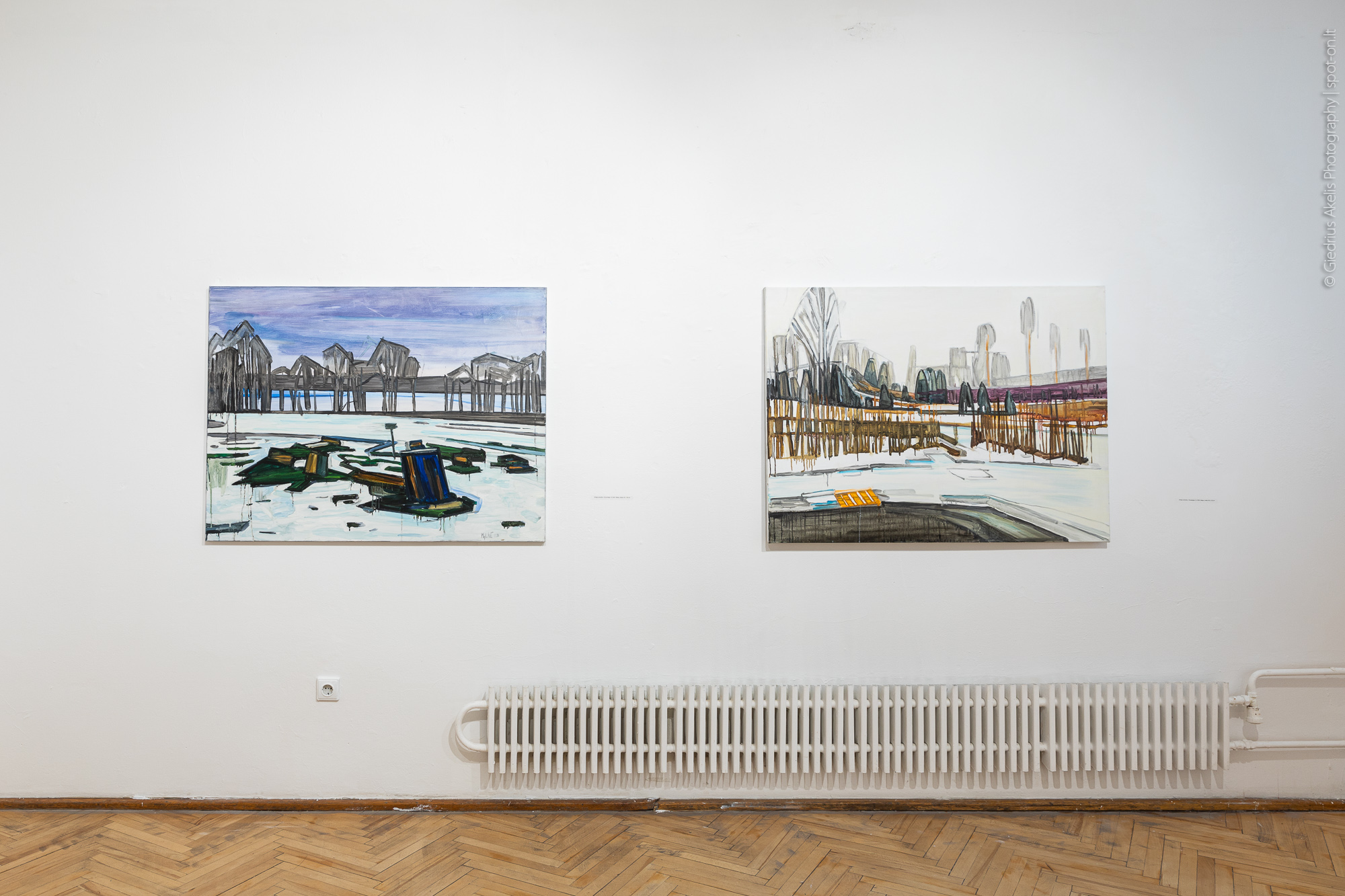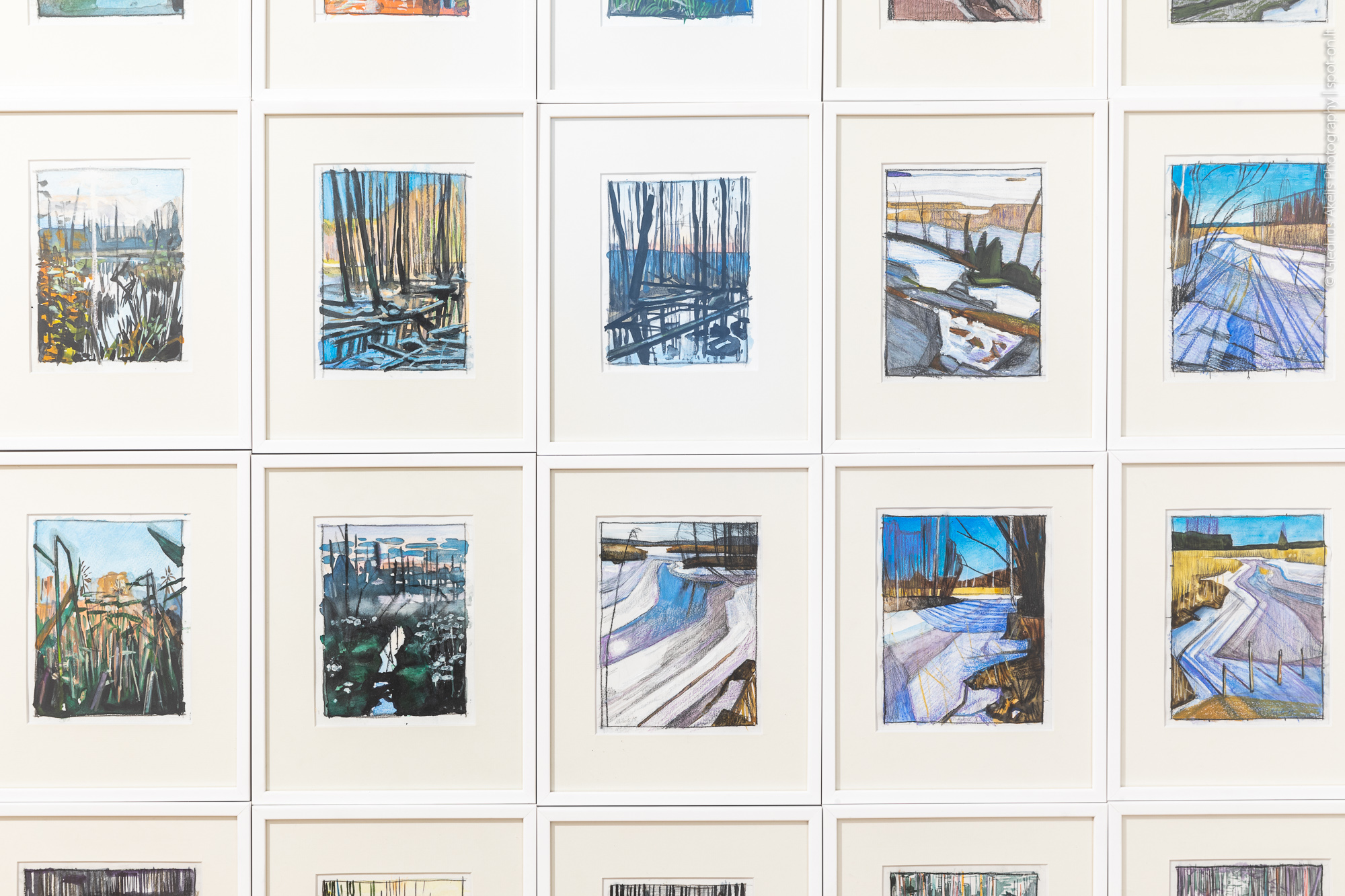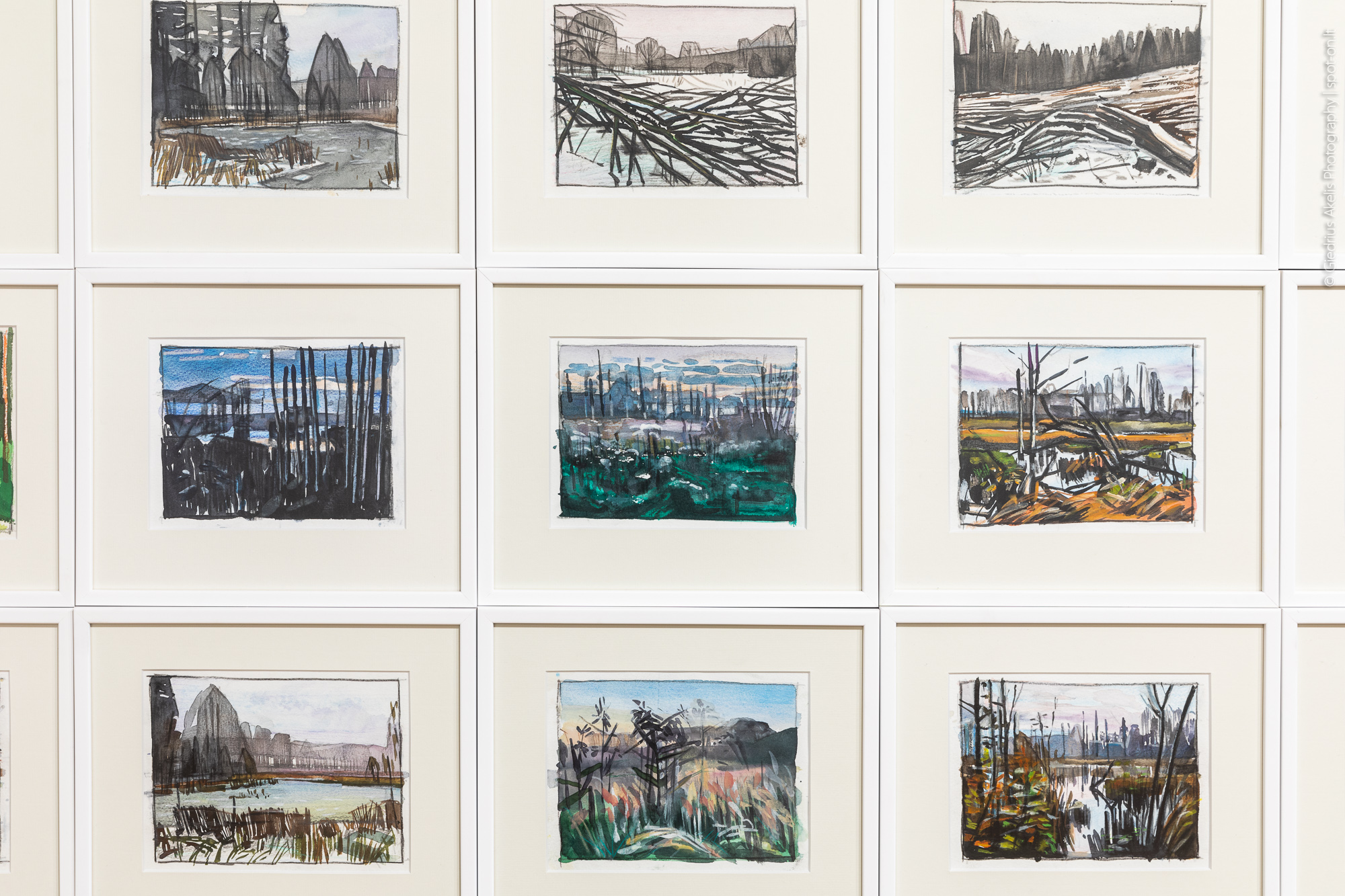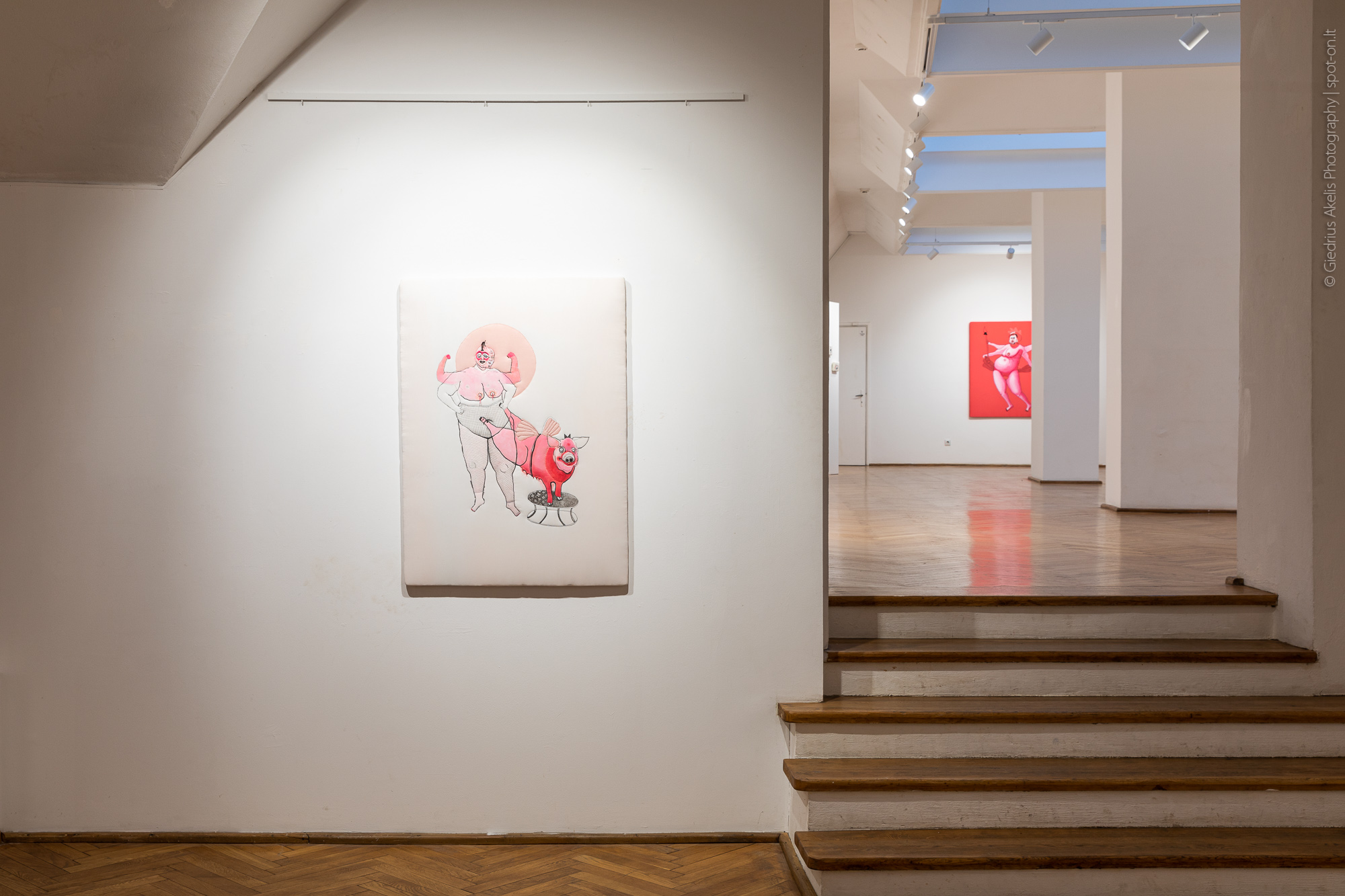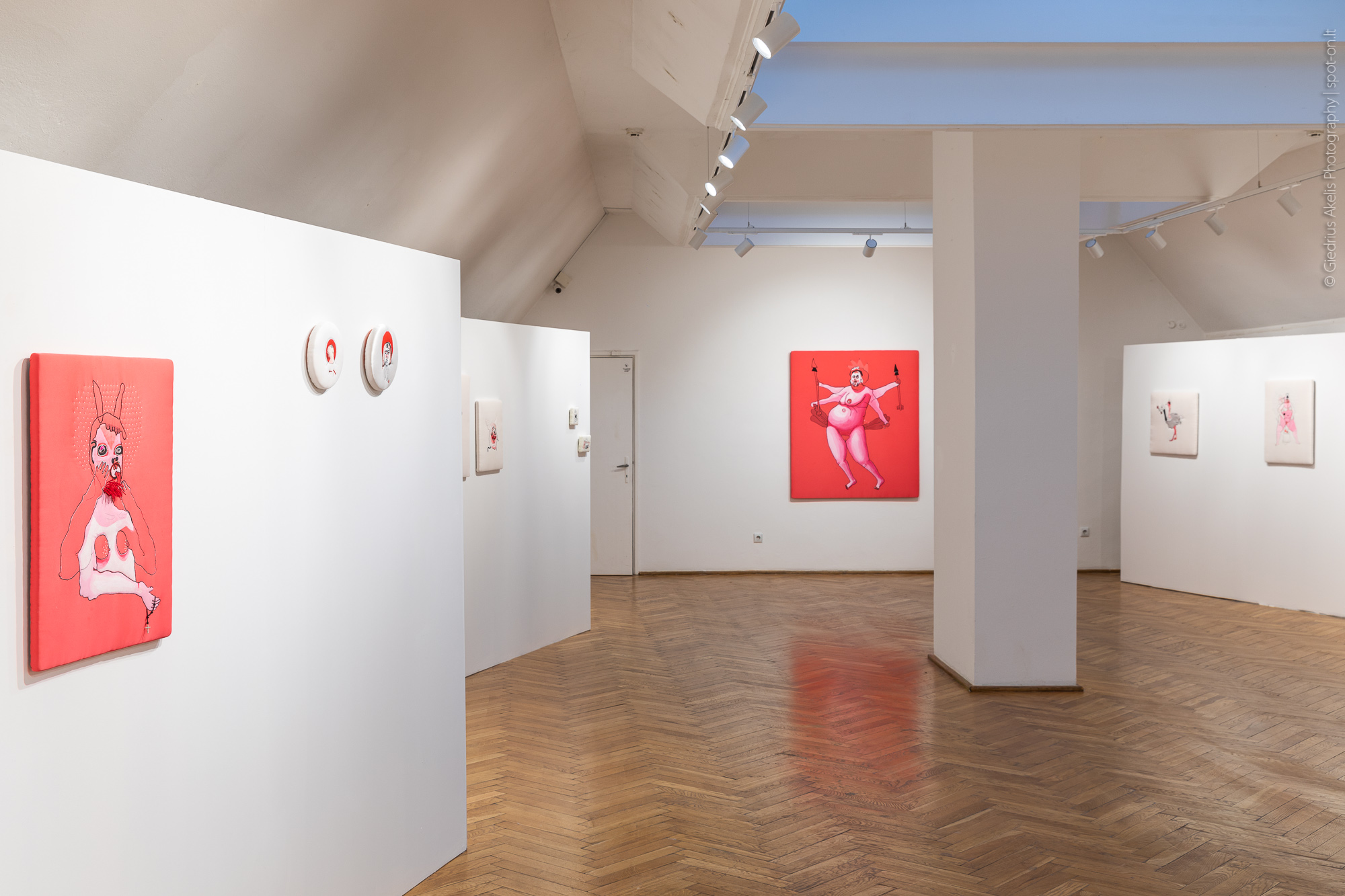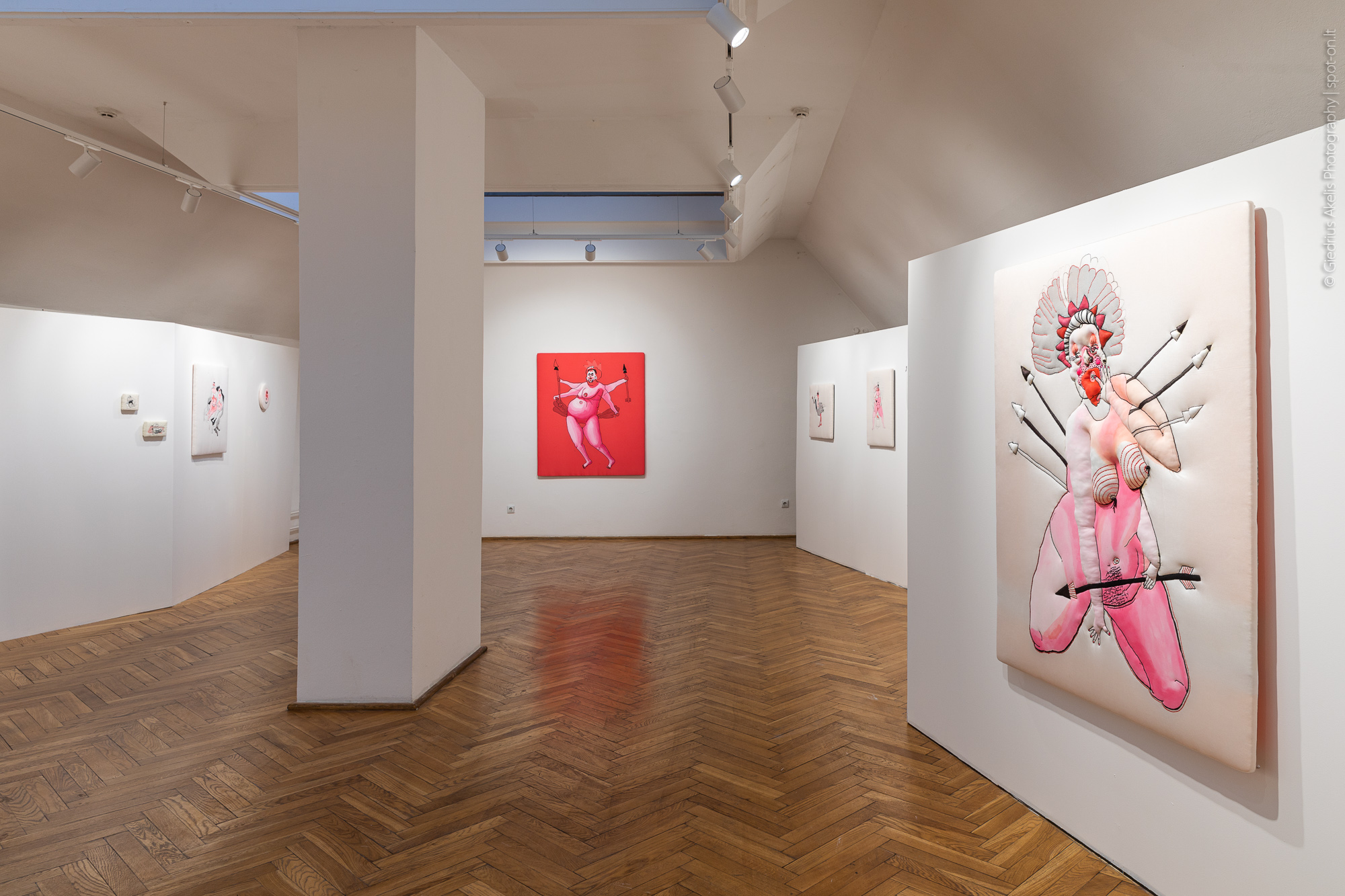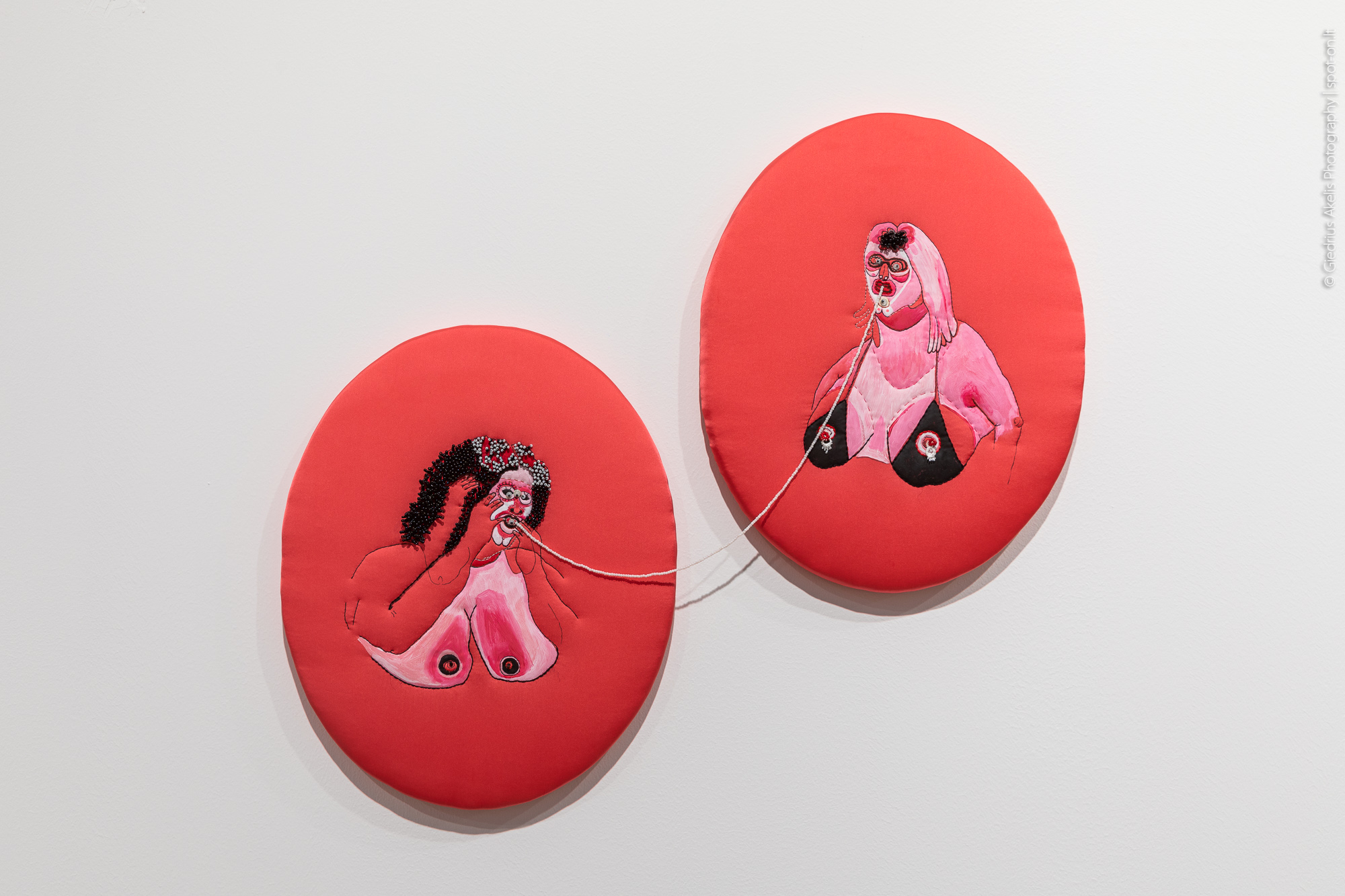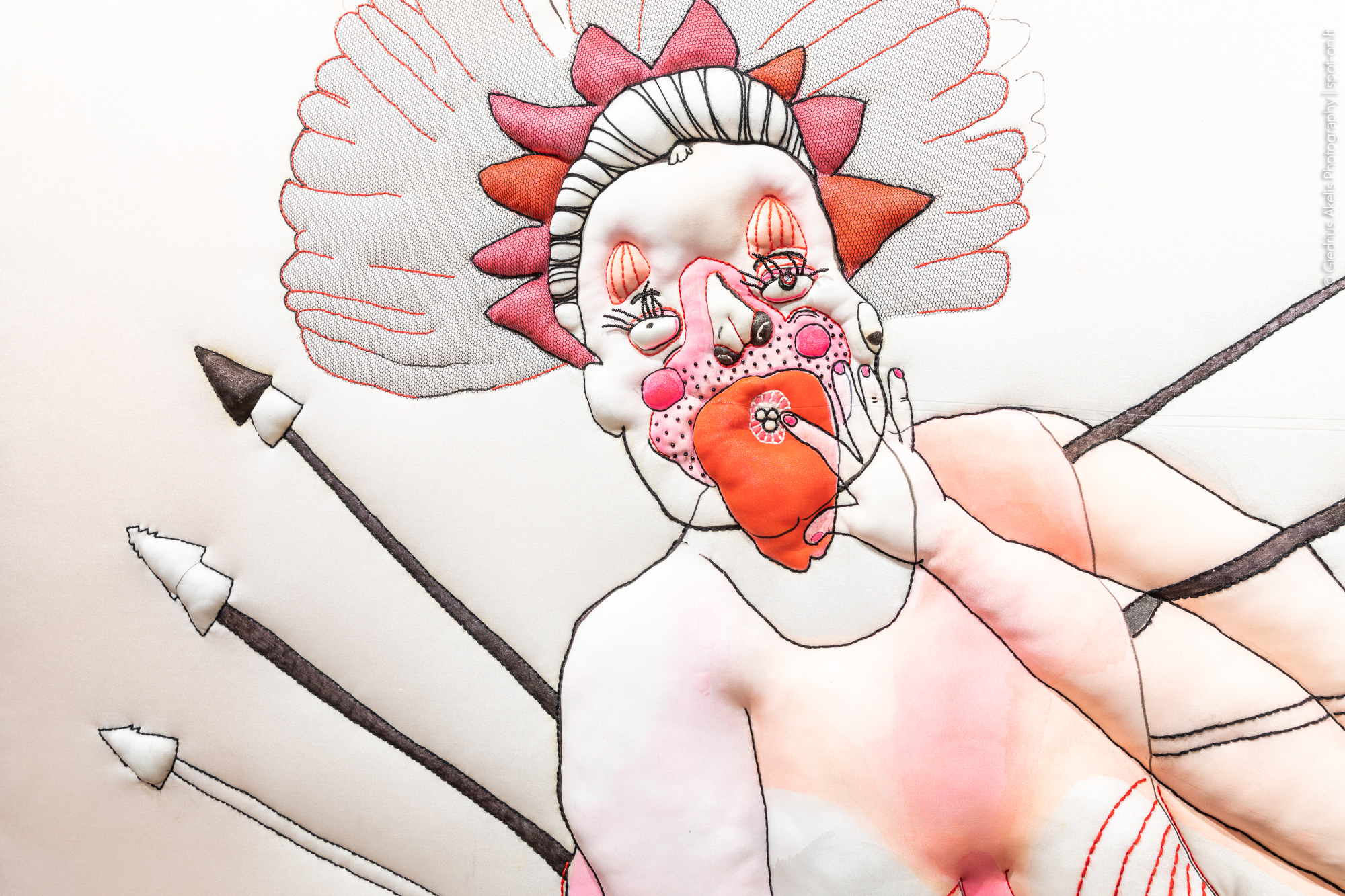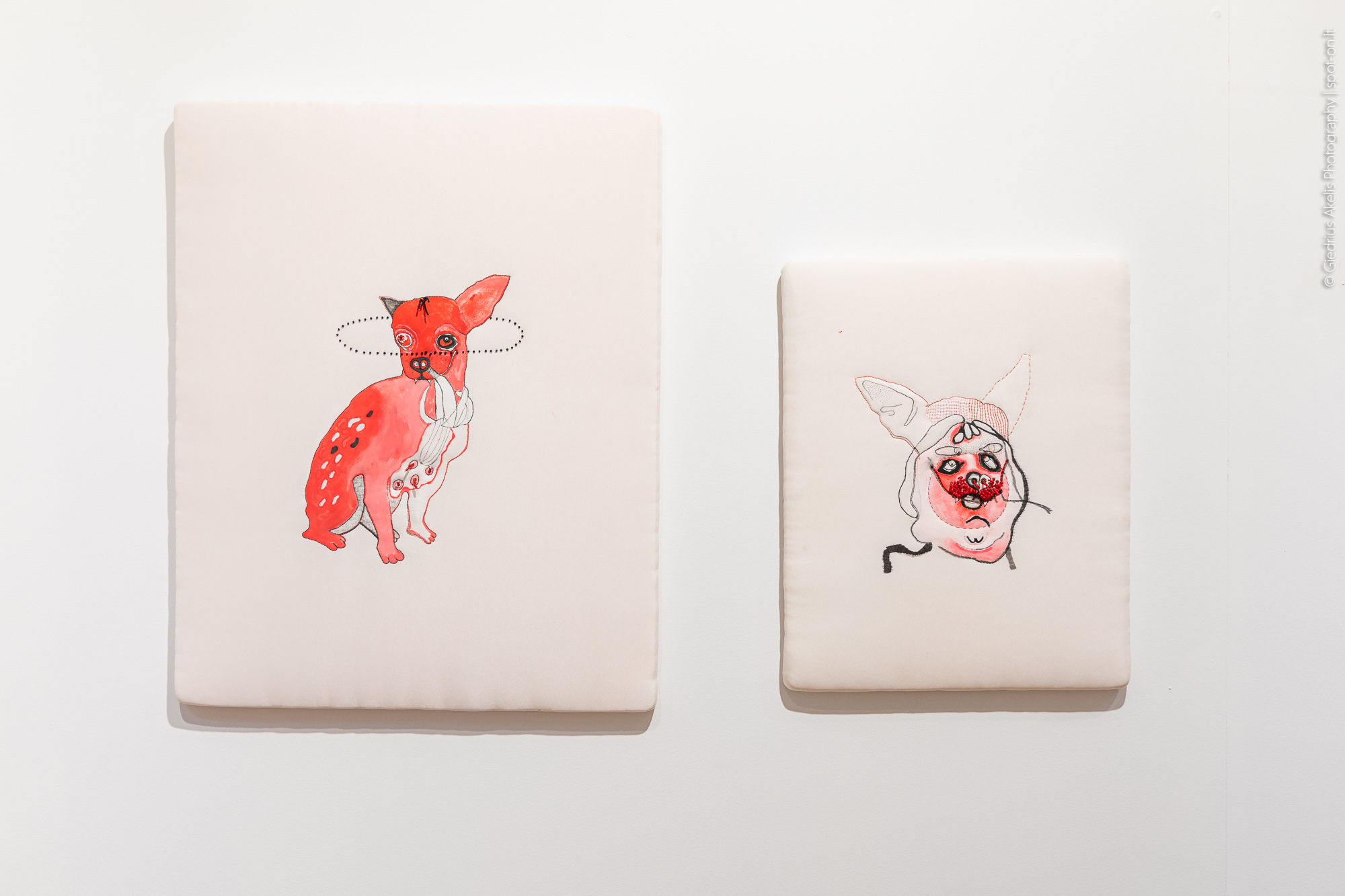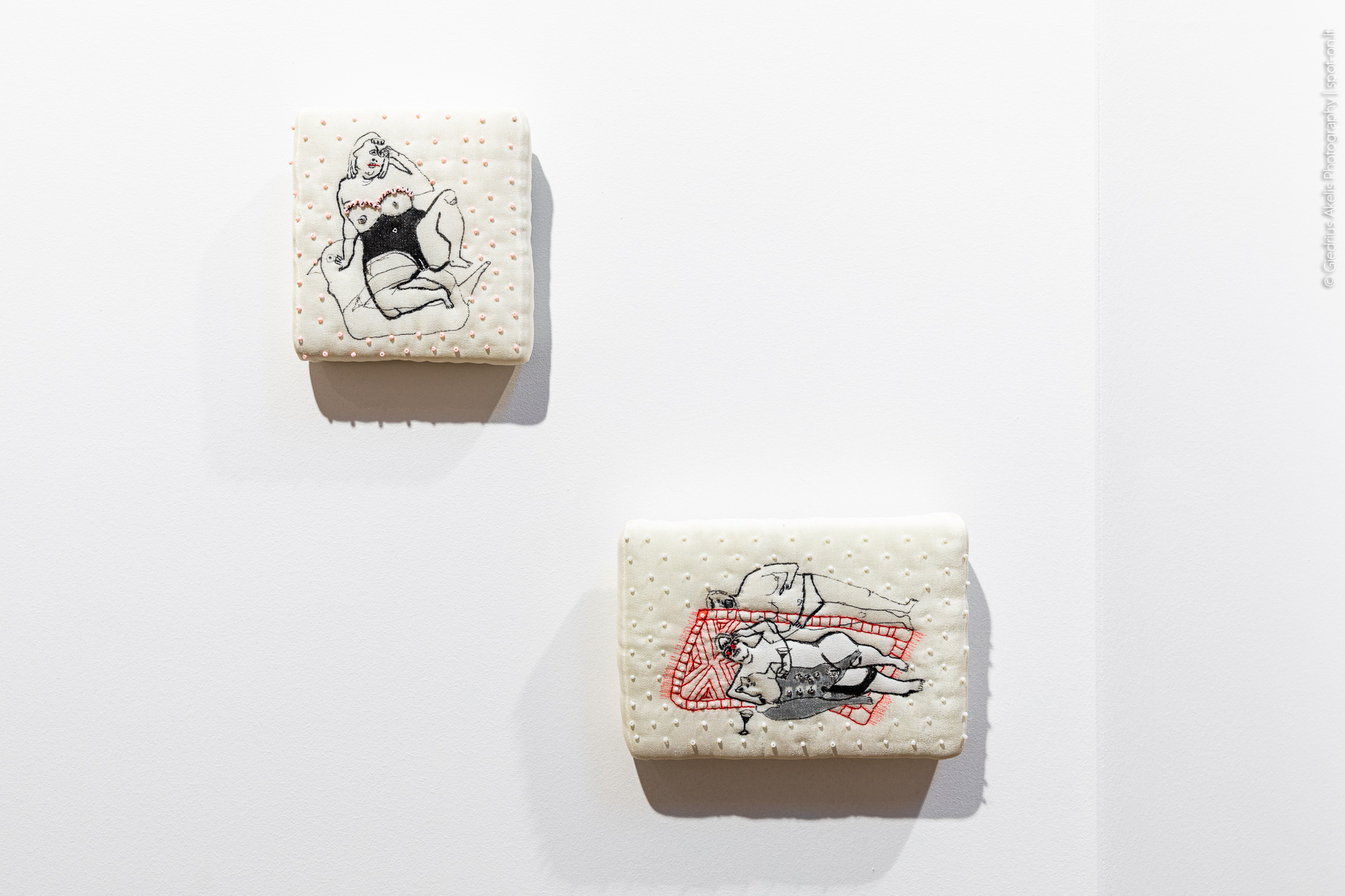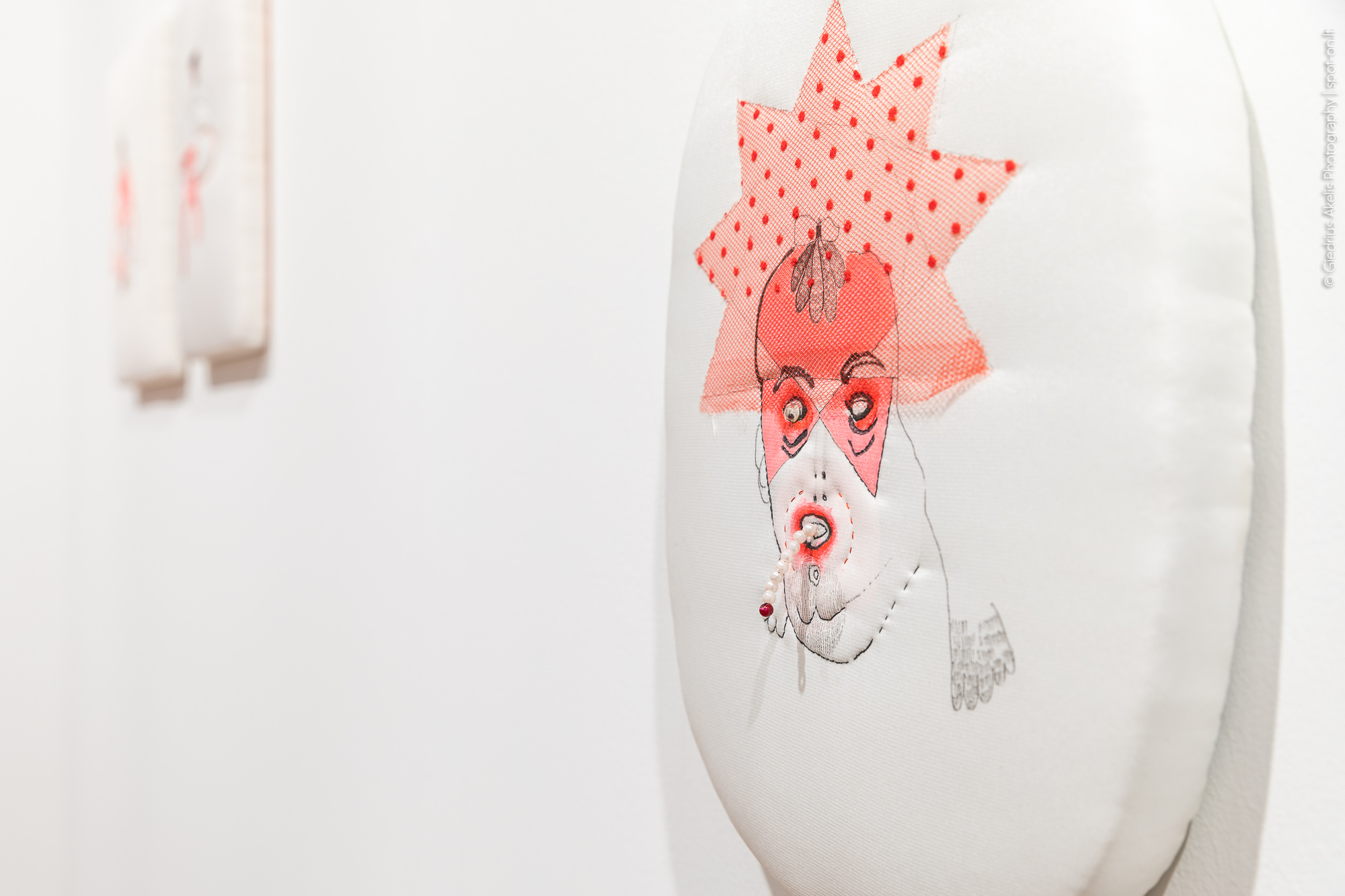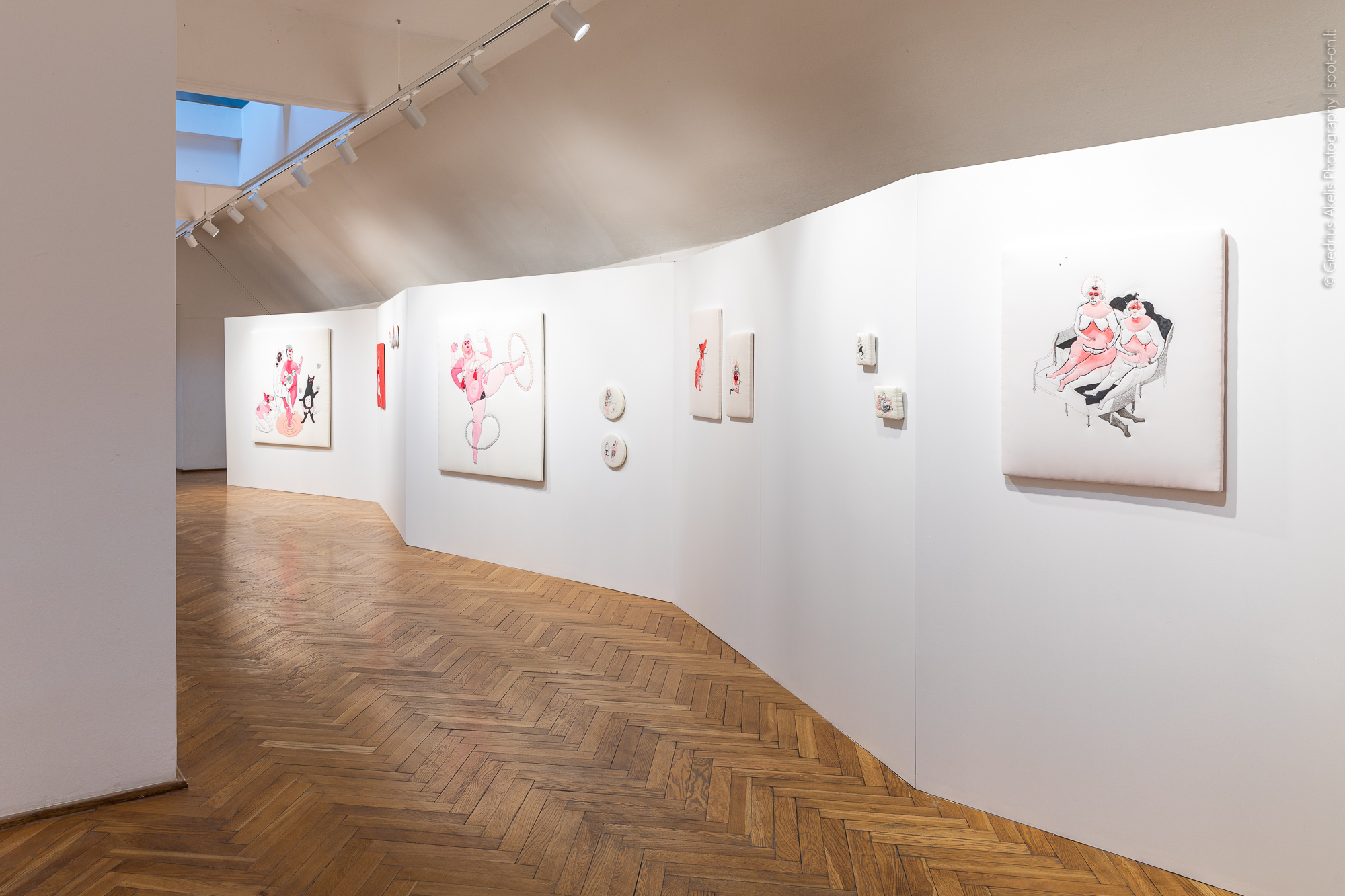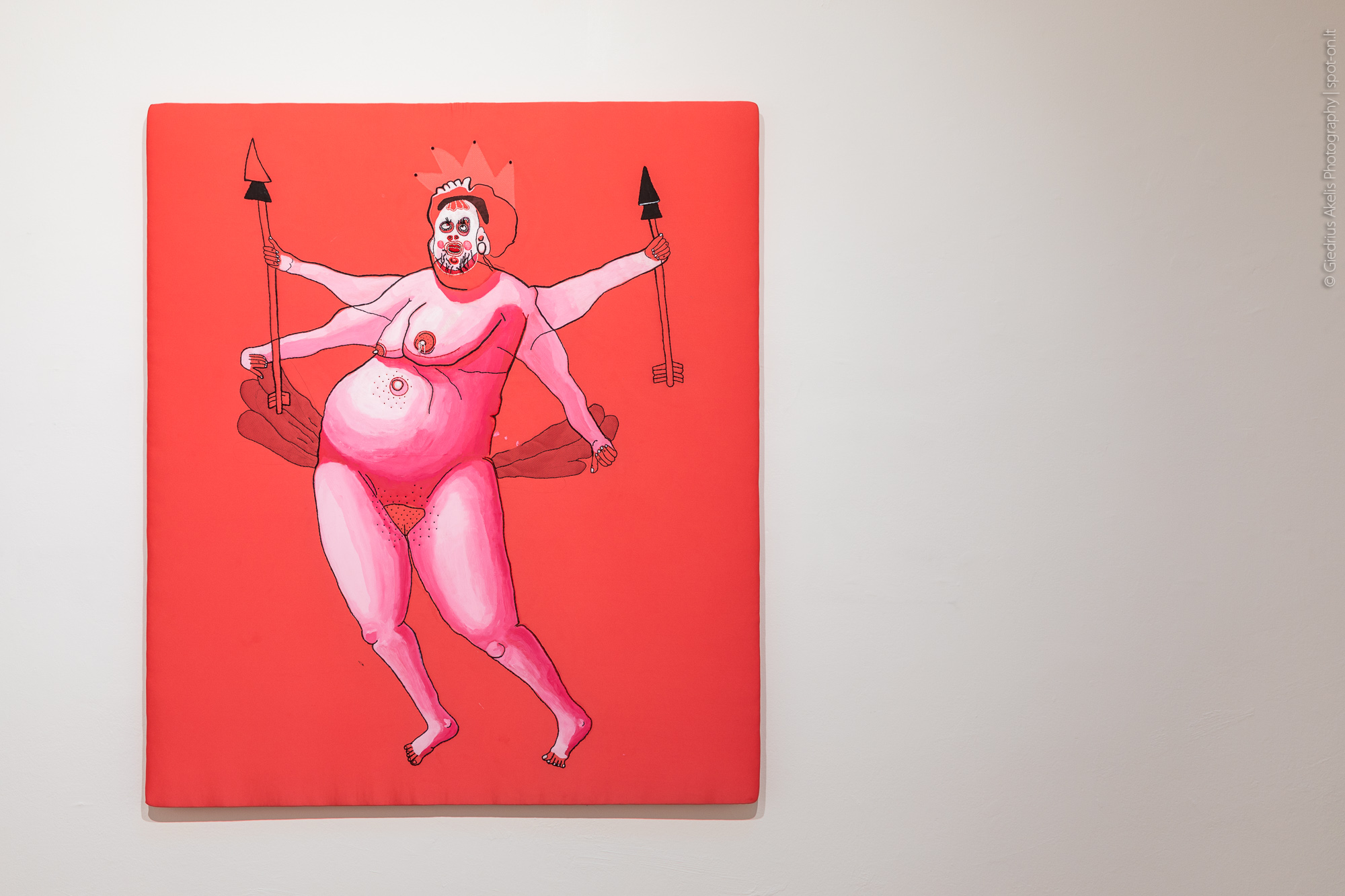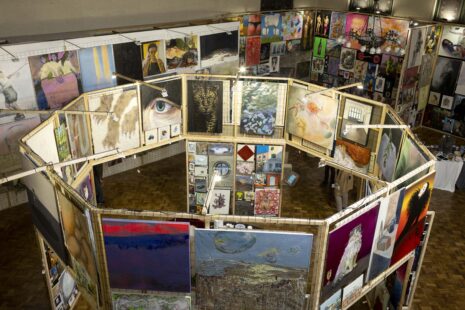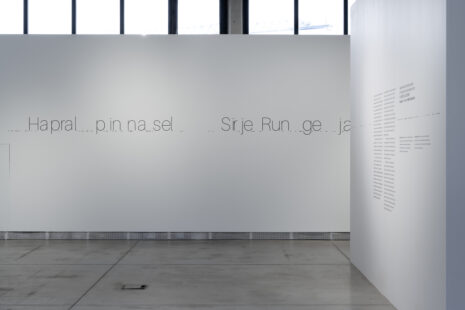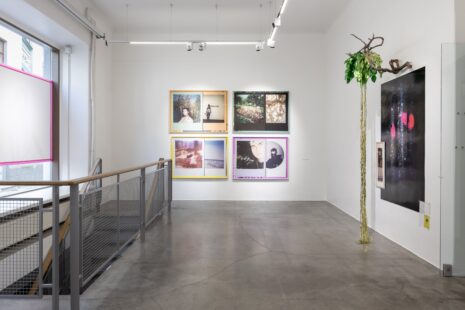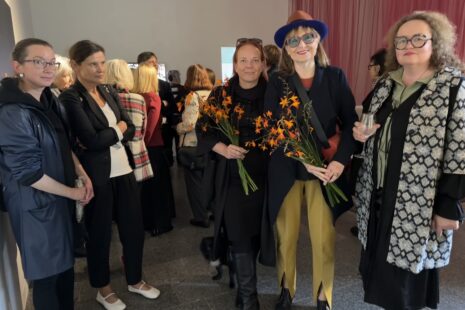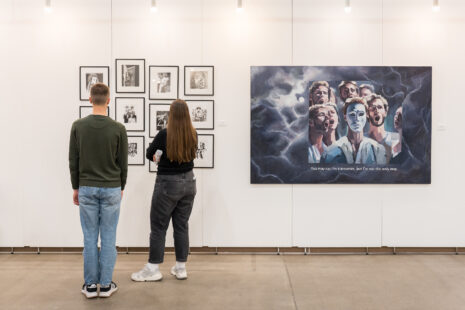Gintarė Stašaitytė and Lukas Šiupinskas’ sculpture exhibition Entropy
Artists living and creating in Kaunas – sculptor Lukas Šiupinskas and glass artist Gintarė Stašaitytė – have collaborated to create a collection of sculptural objects called Entropy. In this latest exhibition, the artists focus on the impressions of the city’s stories in a volumetric form.
In the exhibition, the duo of artists continues with the themes of the city, its public spaces, and the relationship between man and the urban environment, which they have examined in their previous projects and series of works. This time, the artists interpret residential locations based on subjective experience and impressions that are conveyed in sculptural objects of certain materiality characteristic of cities (concrete, metal, mirror surface). The exposition is presented to the viewer as a visual rebus.
On the one hand, the change of personality and urban environment is unlocked through the symbols, recognized by the 80s and 90s generations, that shaped the panoramic view of the city.
On the other hand, having discovered the link between personal childish activities and industrial processes, the artists rhetorically ask: what do the building blocks in one’s childhood symbolize? When does a game or simulation turn into reality? In this respect, each work in the collection is like an artifact connecting the past, present, and imaginary future.
The term “entropy” gives a sense to the constant dynamism of the city. This refers to the temporality of a static state revealed through the motifs of emerging and decaying forms found in the city, determined by both human, environmental or collective history.
When producing joint artworks, Šiupinskas and Stašaitytė, having accumulated different creative and professional skills, complement each other’s competencies and provide the works with a unique aesthetic.
Mykolė Ganusauskaitė’s solo exhibition Beam in Marsh
Contemporary painters were becoming interested in the landscape genre again in the late 90s. Writing about this phenomenon, critic Robert Fleck notices the impact that the changed nature has on their landscape paintings. According to him, “Landscape today is imagined only as artificial. In Europe, industry, agricultural farming and spatial planning have long shaped nature to the most remote regions. It is an advantage for painting – the landscape no longer evokes nostalgia.”
Mykolė Ganusauskaitėhas organized over 20 solo exhibitions in Lithuania, France and Denmark, participated in dozens of group projects in Lithuania, France, Denmark, USA and elsewhere. For Mykolė, the landscape is also always a reflection of cultural and economic relations, but for her that does not extinguish the longing for nature, the need to admire the landscape. The artist depicts landscapes transformed according to human needs, places that can be approached and accessed.
Mykolė’s range of vision contains landscapes at the approaches to cities, penetrated by unstoppable urbanization. The roads are laid with asphalt, paths paved with tiles, water bodies surrounded by strips of concrete slabs, the groups of trees, bushes and meadows are shrinking, the balance between natural and artificial is being lost.
In search of less affected nature, the artist travels to lakes, river valleys, forests and marshes. All these landscapes are empty. Not even tiny human figures can be found.
However, even here we find traces of “invasive” human activity: old car tires dropped at the edge of the forest, building structures that have lost their functions. In her paintings, Mykolė does not leave such findings out of romantic landscapes. A concrete beam stuck in an amazingly beautiful blooming marsh is not an immediately noticeable foreign body. However, the sight disturbs the viewer for a long time. Such landscapes changed by human activity, in turn, change the person herself.
There is nothing threatening, dangerous or mysterious in Mykolė’s landscapes. She doesn’t threaten with ecological catastrophes but simply reflects on the landscape as a break between nostalgia and consumption.
Curator of the exhibition Prof. Raminta Jurėnaitė
Solo exhibition Cosmic Games by artist Simona Bagdonaitė Gubinienė
In her latest series of works created with her own technique, the artist, who reflects on existentialism in her oeuvre, focuses more closely on the inner world and feelings of a woman living in a postmodern society. Considering the problems caused by this, Gubinienė names the loss of morality and inferiority complexes as the most sensitive issues that cause feelings of insecurity and lead to isolation.
Examining the woman’s body as a lived experience in her works, the artist interprets it as a canvas in which the signs of society and negative influences are inscribed.
The totality of female forms, colour spots, and other details observed in the works, turns into an authentic language of signs that can be perceived as a reflection of society: the disappearance of values, alienation, egocentrism.
The dominant colour pink refers to the naivety, immaturity, or instantaneous playfulness of the personality. It is a way to visualize the relationship with the changing space to which the characters created by the artist adapt by illustrating certain phenomena: celebration, circus, behind the scenes of life, secret desires, fears, and a libertine way of life focused on pleasure or selfish desires. This is how the changing moods of characters or viewers who recognize themselves in them are revealed. It is the confusion, frustration, egocentrism, or overcome phobias experienced at various stages of life that are replaced by festive elevation. All this turns into emotional interferences that prevent the normal flow of everyday life.
Photos and text: Gallery Arka

